Scientists have estimated that there are 8.7 million animal species on Earth. Some of these are fierce (lions, sharks, tigers). Some are adorable (rabbits, deer, otters).
And others are, well, really weird.
Across the globe, you’ll find unique animals that exhibit truly remarkable and bizarre features and behaviors. From a frog that shows off its organs to a goat that faints when scared, here are 50 unusual animals to add to your travel bucket list now.
Shoebill
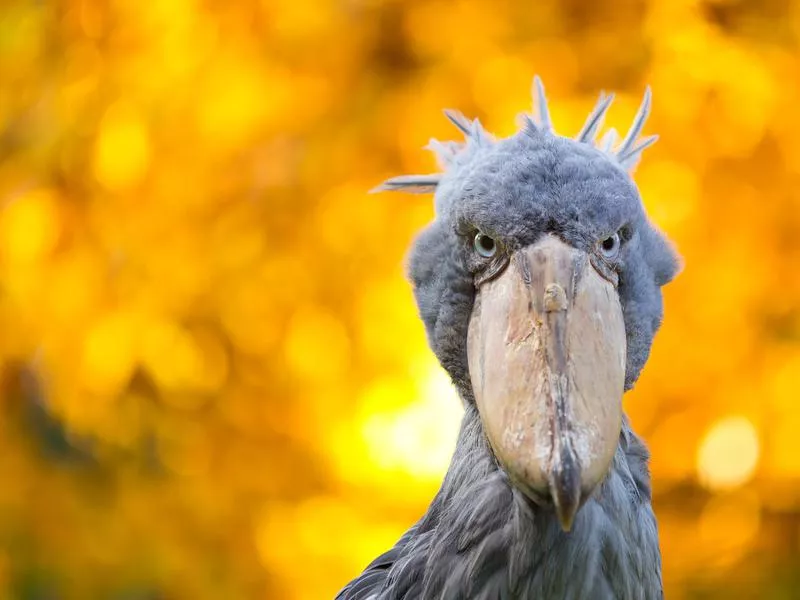
Getty Images
No shock here: The shoebill stork has, well … a bill shaped like a shoe.
Also of note about this amazing animal? Shoebills are abnormally tall, with some individuals reaching heights of over 4 feet. And, unlike many other birds that inhabit similar marsh environments, shoebills are highly effective predators. Their long legs are perfect for traversing shallow waters, where they prey on reptiles, rodents and fish. They are even known to strike against juvenile crocodiles!
Where to Spot a Shoebill
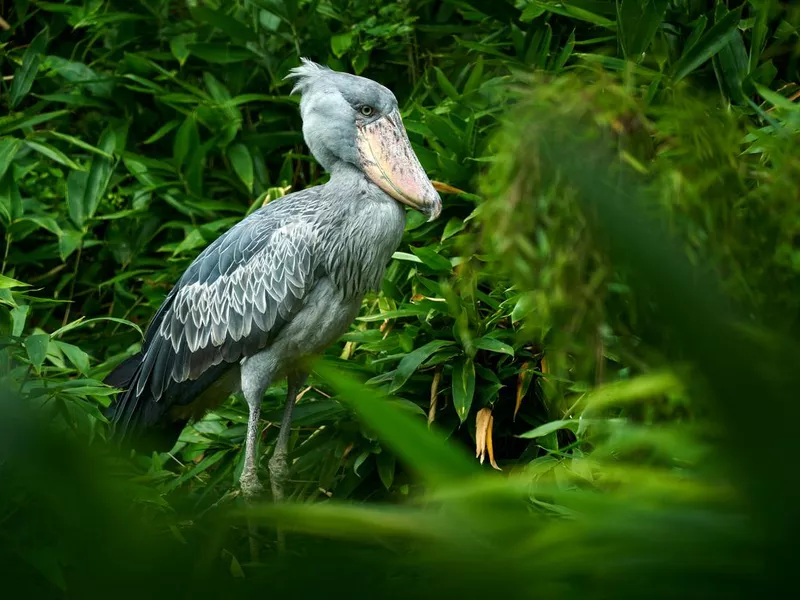
Getty Images
Shoebills use their powerful beaks to grasp and strangle just about anything they encounter, but don’t worry — they don’t prey on humans.
Find one in East Africa, where their habitat is concentrated.
Stick Insect
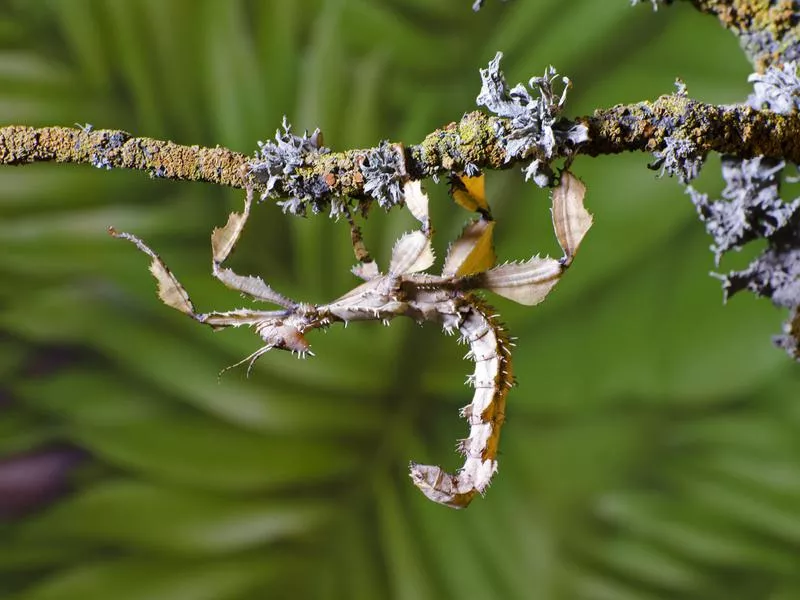
Getty Images
Finding a stick insect requires careful observation; as the name makes very clear, it resembles a stick. This, combined with an ability to stay perfectly still for long stretches of time, provides the stick insect with “one of the most efficient natural camouflages on Earth,” as “National Geographic” aptly puts it.
There are many varieties of stick insects. One of the coolest is the giant prickly stick insect, pictured here. Native to Australia, it boasts the added feature of thorn-like spikes to further blend into its surroundings.
Where to Spot a Stick Insect
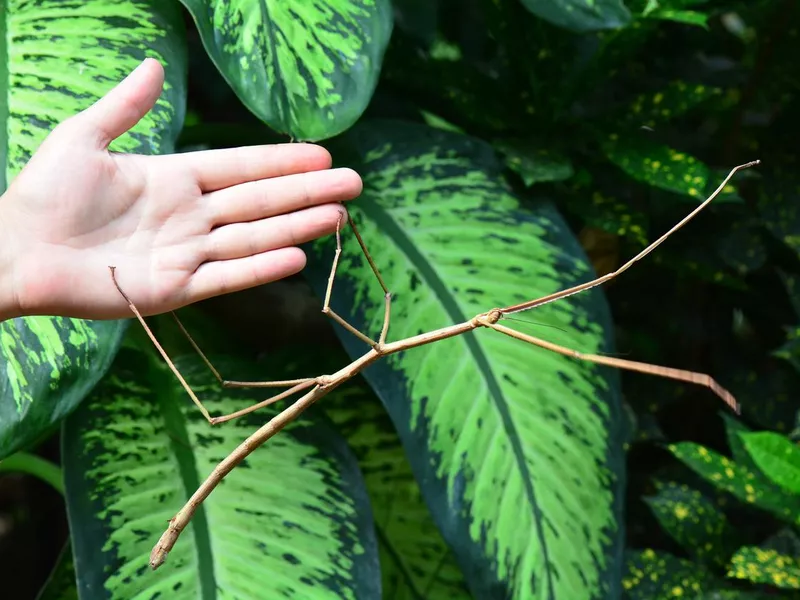
Getty Images
If you suffer from an insect phobia, as many do, the Phobaeticus kirbyi will haunt your nightmares. At over 21 inches with its legs outstretched, this is one of the longest insects in the world.
You can find it (or try to find it — good luck!) in Borneo.
Glass Frog
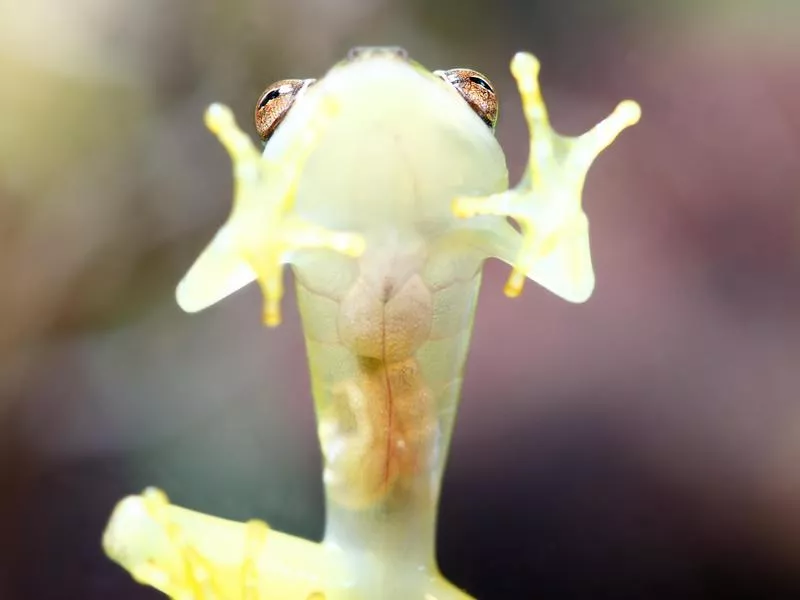
Getty Images
Just as you can see through glass, you can see through the extraordinary glass frog.
Many of these frogs have lime-green skin, but some lack any coloration on their underside, making their organs visible to the naked eye. Equally amazing are their spotted backs, which scientists speculate are meant to resemble eggs — so predators going after their offspring get confused.
Where to Spot a Glass Frog

Getty Images
Your best chance of spotting this tree-dwelling frog is in Costa Rica or Panama.
Costa Rica’s Tortuguero National Park, in particular, promises a good chance of seeing one, in all its transparent glory.
Mantis Shrimp

Getty Images
Mantis shrimp are ancient, fierce and more than a little weird. Various forms of mantis shrimp have been around for an estimated 400 million years, and they aren’t like any other shrimp around. They are so freakishly strong that their appendages, called “clubs,” can smash crab shells and bust open clams. (Some varieties have spears rather than clubs, which are equally formidable.)
These clubs can also be used to dish out around 500 punches in under a second, delivering enough force to break glass. And that’s not all. Because these shrimp have incredible eyesight (they can see in two different directions at once), they strike with pinpoint accuracy.
Where to Spot a Mantis Shrimp
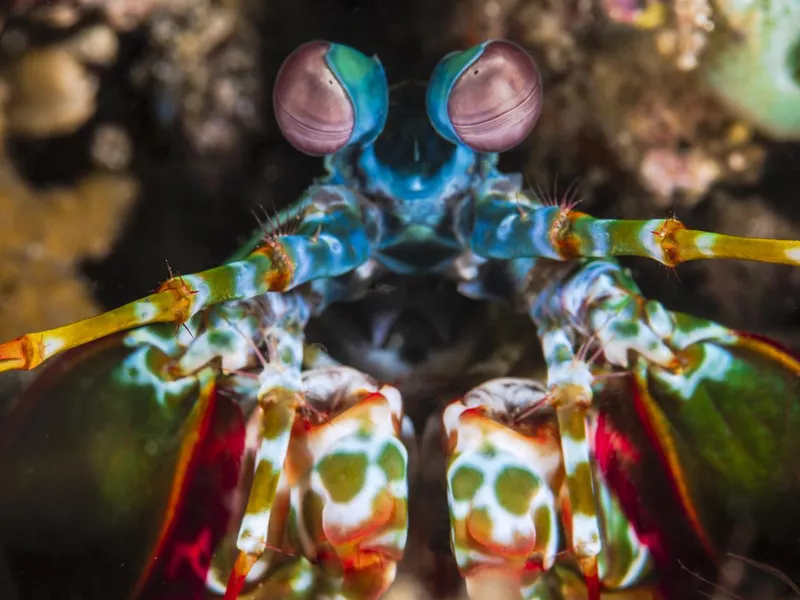
Getty Images
There are about 400 different species of mantis shrimp, the most dazzling-looking of which is undoubtedly the multi-hued peacock mantis shrimp.
The waters of Costa Rica and Bali are particularly rich with mantis shrimp; book a diving expedition to see one up close.
Wombat
When you see a wombat — a fuzzy little marsupial with a friendly face and calm demeanor — you’ll probably immediately want to hug this cool animal. But don’t be fooled by appearances: Wombats sport rodent-like teeth and can get aggressive if they feel threatened.
Wombats are surprising in other ways, too. Unlike other marsupials, their pouches face backward and their poop is cube-shaped. To protect the tunnels where they dwell, they dive into them headfirst and stick up their rump, which is tough enough to thwart predators.
Where to Spot a Wombat
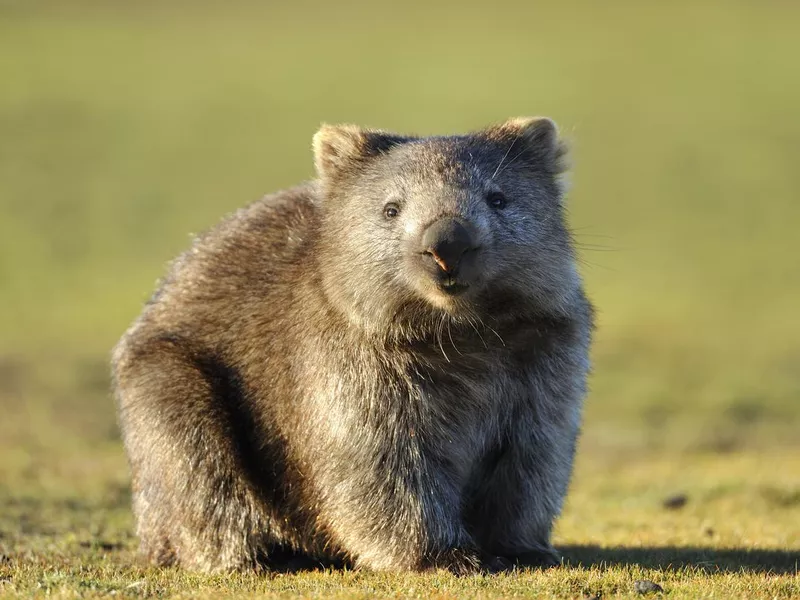
keiichihiki / Getty Images
You can find wombats in the San Diego Zoo, but they are best viewed in the wild.
Head to Australia’s Maria Island, where they are prevalent and easy to spot. The island is located off the Tasmanian coast and is a beautiful place to visit in general.
Axolotl
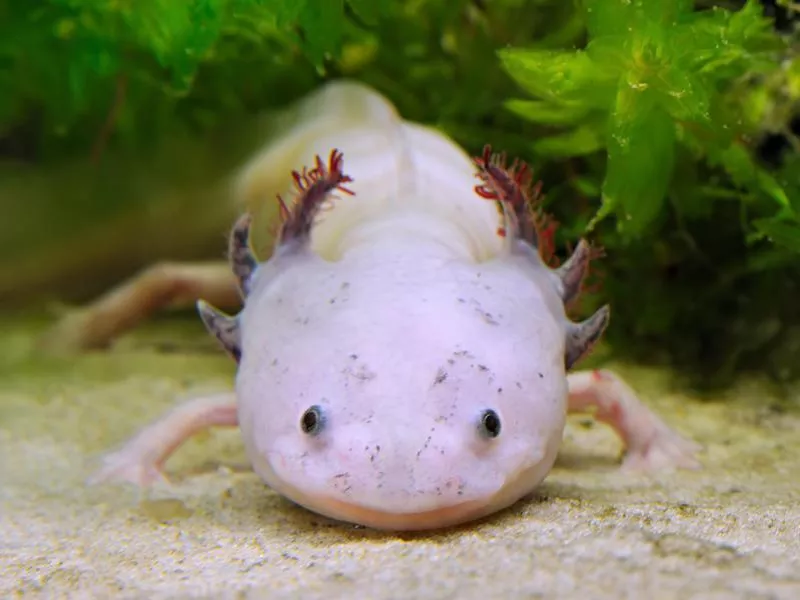
Getty Images
The axolotl salamander manages to be at once adorable and kind of disturbing. Though it develops legs, it never reaches land and, instead, spends its time strolling the underwater surface.
Its nickname? Walking fish.
These Pokemon-like fish make for an incredibly cute and unusual pet.
Where to Spot an Axolotl
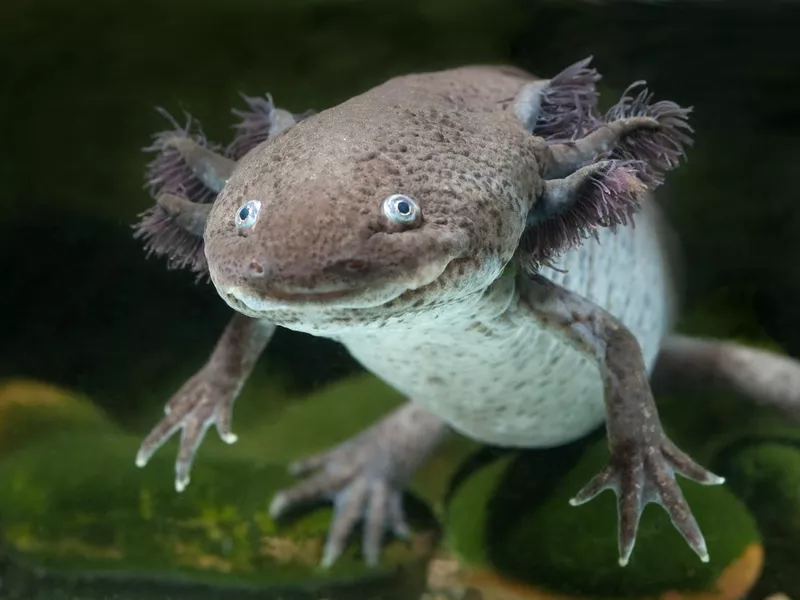
Getty Images
This extraordinary creature — which comes in colors ranging from creamy white to olive — is only native to Mexico. Your best chance of seeing one exists near Mexico City in the lakes of Xochimilco.
A population decline is largely attributed to habitat loss but is also due to the fact that the axolotl is considered a culinary delicacy. (Yum?)
Sun Bear

Getty Images
When people think of bears, they often imagine the big, fast and potentially dangerous kinds — polar, grizzly, brown and black. They often don’t think of sun bears, which are unlike any of their cousins.
Sun bears are the smallest bears in the world, with many adults weighing under 100 pounds. But what really makes them stand out is their unusually long tongues, which can measure up to nine inches. Also known as “honey bears,” sun bears climb trees to find honeycomb, and their tongues come in handy when they lick out their loot.
Where to Spot a Sun Bear
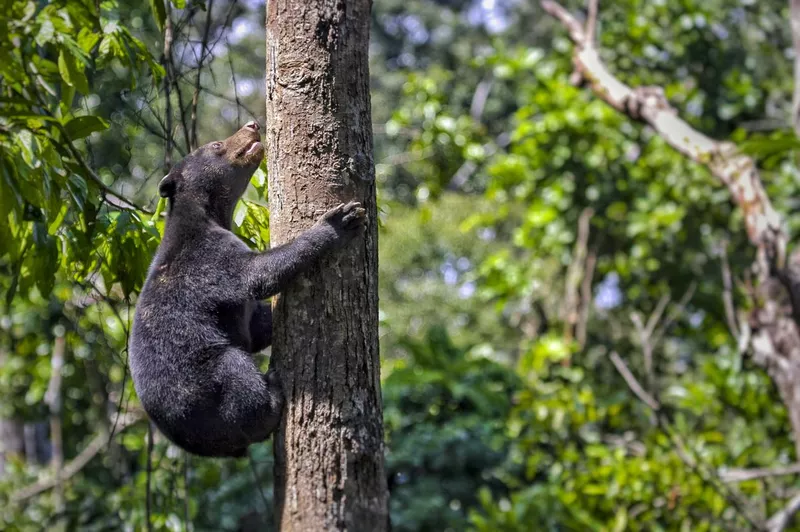
Getty Images
Unfortunately, deforestation is contributing to population declines. But you can still find sun bears in Southeast Asia where, unlike their North American cousins, they thrive in tropical forest environments.
The Islands of Sumatra and Borneo are particularly good places to access their habitat.
Lyrebird
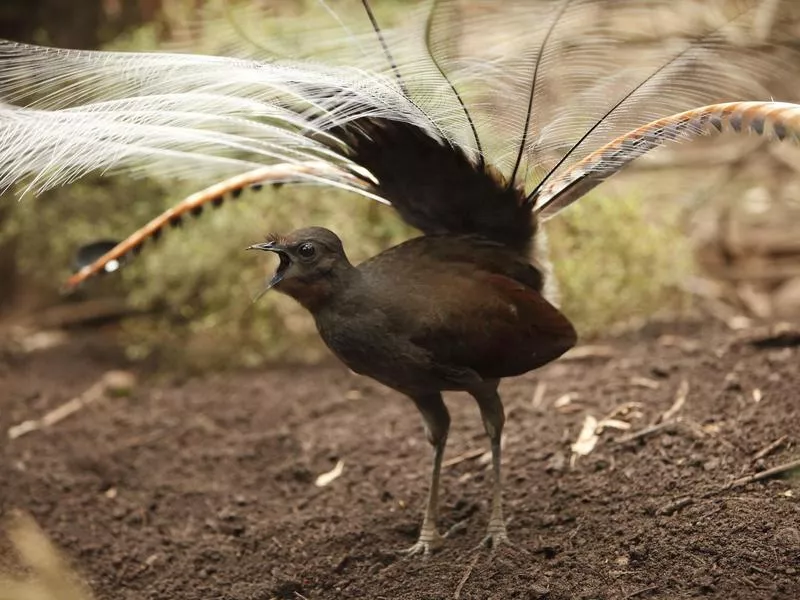
Getty Images
Lyrebirds could easily win a talent show for their ability to mimic sounds in their environment.
True, this trait exists in other birds, but lyrebirds take things to a whole new level. They can imitate just about any sound, including industrial equipment and power tools.
Where to Spot a Lyrebird
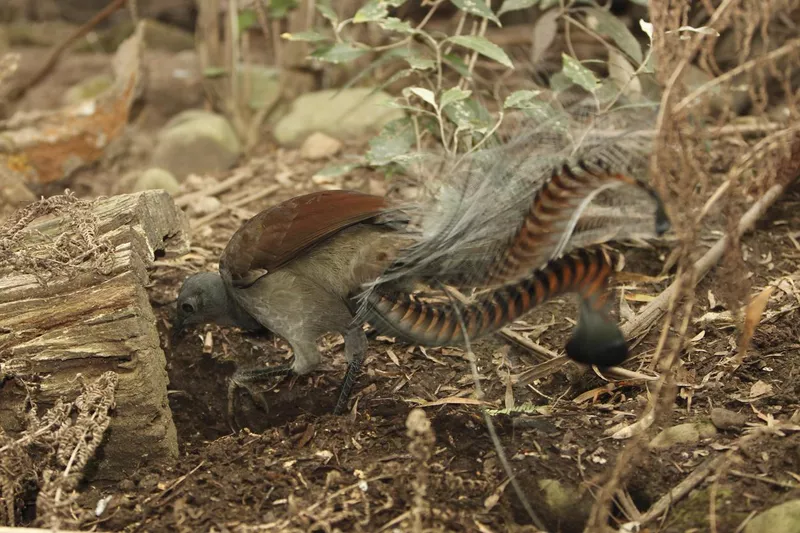
Getty Images
Found in Australia, the birds are also known for their flamboyant mating displays; the males show off their long tail feathers while dancing and using their superb vocal abilities to attract mates.
Stick to the rainforest zones of Queensland and New South Wales to find them, or head to Tasmania, where they were introduced artificially but have since propagated and established populations.
Parrotfish
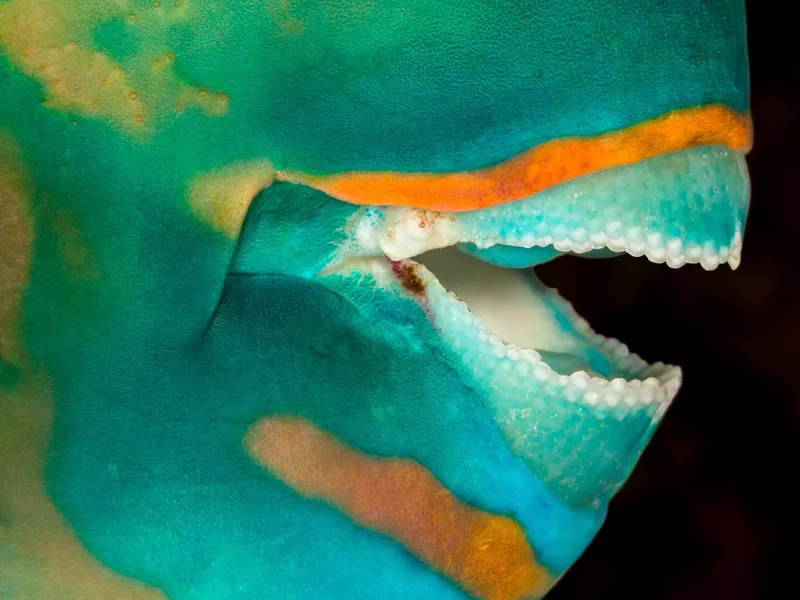
Getty Images
You can find parrotfish in tropical reef environments, where they use their external teeth — which look like a beak — to break algae off rocks, coral and other hardened substrates. This ability allows them to carve out a living in places where many other species cannot survive.
Another fun (if slightly disgusting) fact? Parrotfish defecate sand. As it turns out, many of the sand grains found on white-sand beaches are actually parrotfish poop.
Where to Spot a Parrotfish
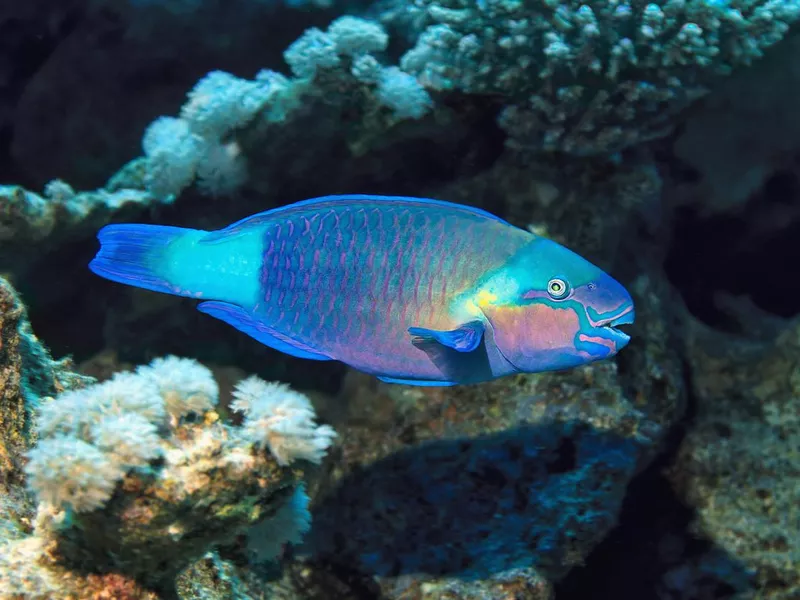
Getty Images
Parrotfish are found in the Indian and Pacific oceans.
The Seychelles islands off East Africa boast a particularly sizable population.
Aye-Aye
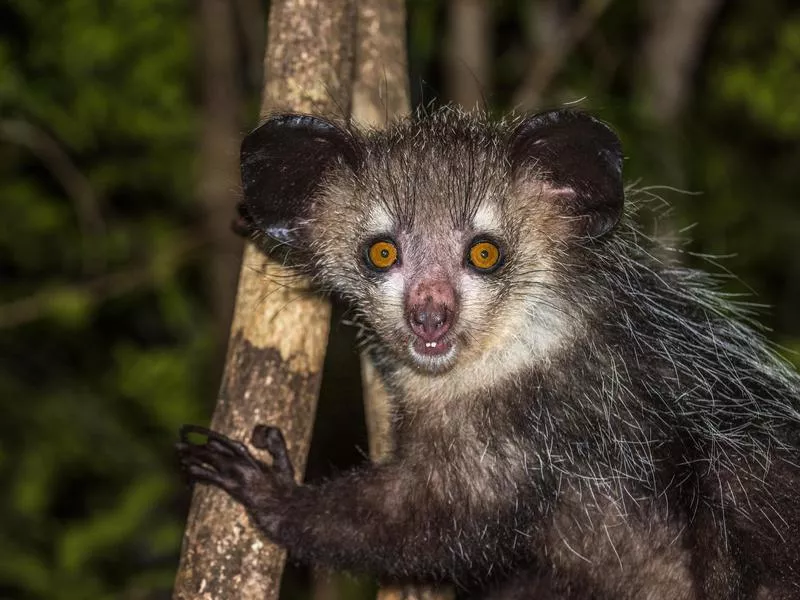
Getty Images
These nocturnal lemurs have a very unusual build, with large ears and rat-like teeth. After tapping on trees to locate insects based on percussion feedback, they bore a hole with their teeth and long middle finger to extract and eat the insects.
With the behavioral markings of a woodpecker and the appearance of a primate mixed with a rodent, the aye-aye is one of a kind and, strangely, kind of cute.
Where to Spot an Aye-Aye
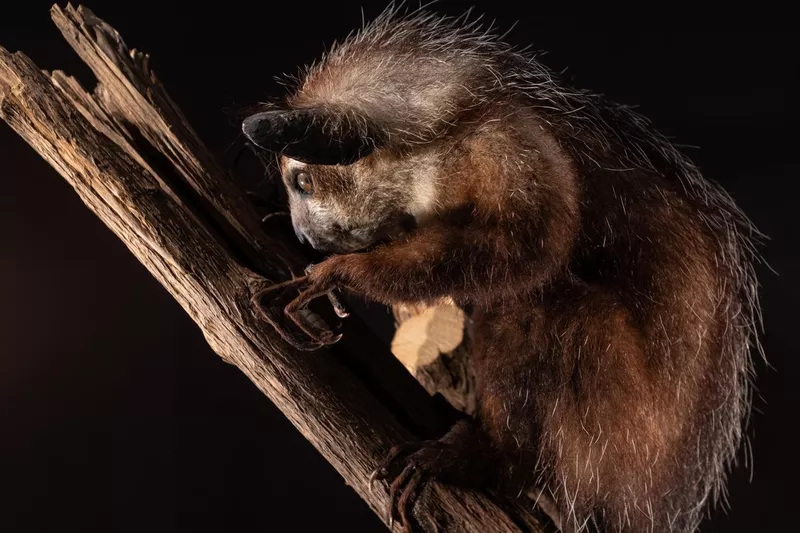
Getty Images
Head to Madagascar to spot these googly-eyed creatures.
After the sun sets is when you can focus your energy on searching for the aye-aye.
Okapi
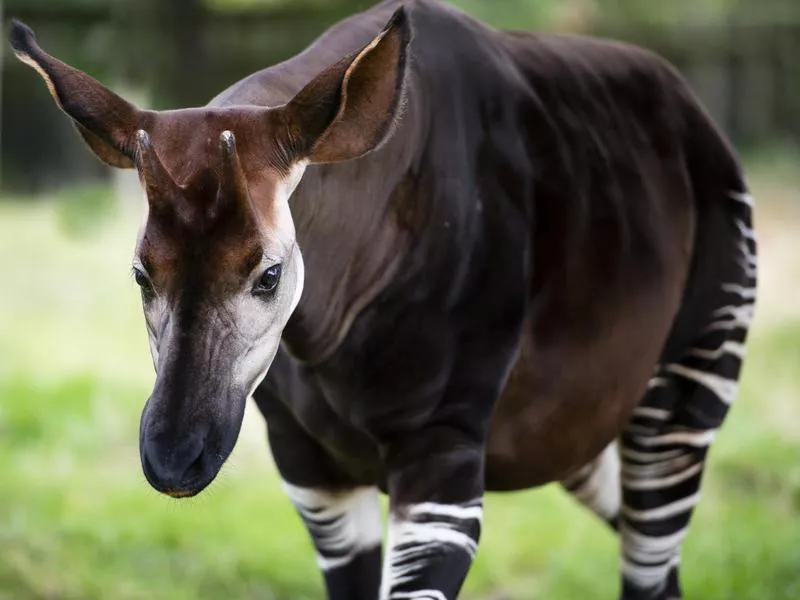
Getty Images
Can’t decide if you’d rather see a zebra or a giraffe? Why not see an animal that looks like a cross-breed of both?
The okapi is the only living relative of the giraffe but features the distinctive black-and-white markings of the zebra on its hindquarters and front legs. Its nickname? The “zebra giraffe,” obviously.
Where to Spot an Okapi
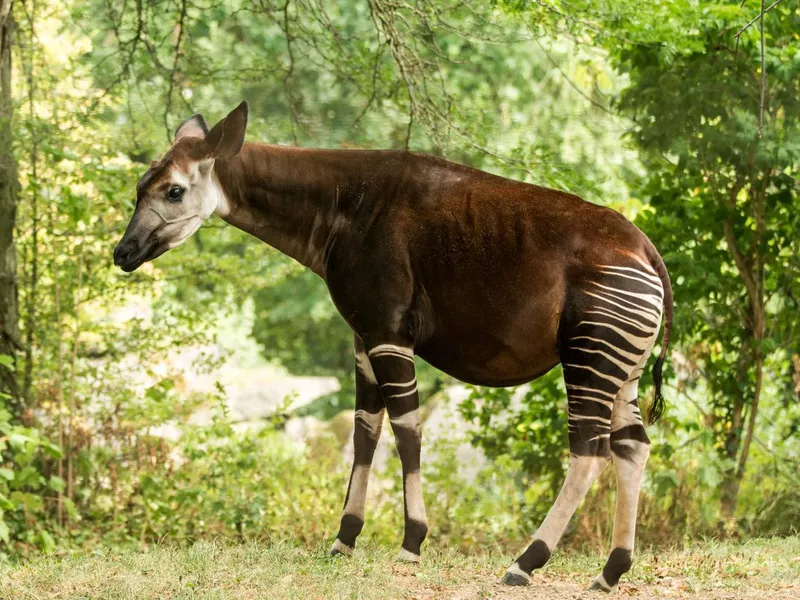
Getty Images
This endangered animal is leery of humans and hard to find (so much so that scientists didn’t discover the okapi until 1900). It lives in the Uturi Forest in the Democratic Republic of Congo, but travelers can’t access this area.
Instead, head to the White Oak Conservation Center in Florida, which focuses on the conservation of okapi, and book a tour led by a wildlife expert.
Markhor
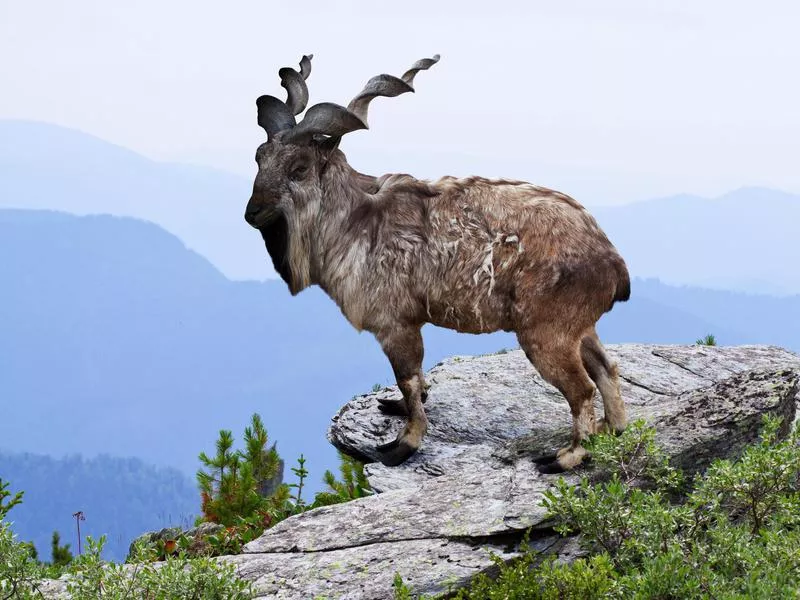
Getty Images
This exotic wild goat is also known as a “screw horn goat,” and it’s easy to see why: Its head is adorned with long, corkscrew-shaped horns. Unlike most goats, which can appear a little silly, the markhor strikes a majestic pose, with a long beard that clearly demonstrates wisdom.
The species is a rare success story; thanks to dogged conservation efforts, its numbers have gone up by 20 percent, and it’s no longer on the endangered list.
Where to Spot a Markhor
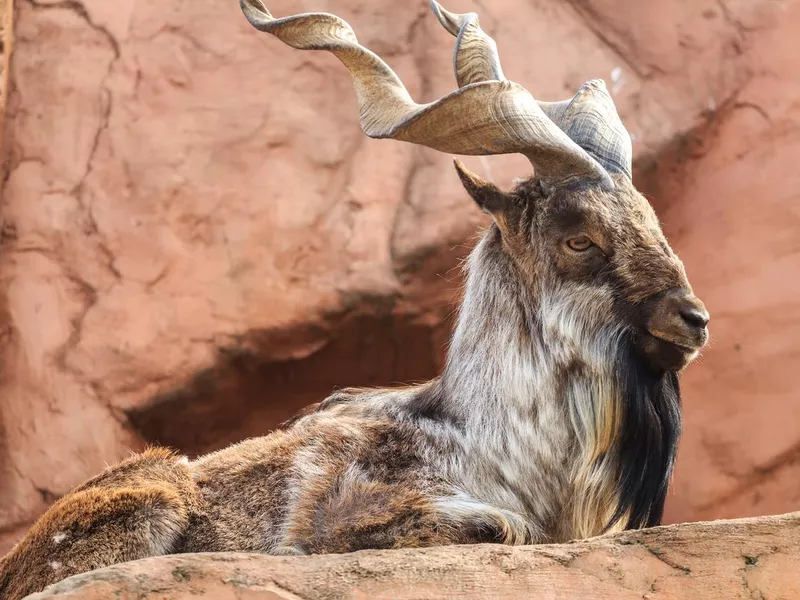
Getty Images
You’ll find markhor in the mountains of Pakistan, Afghanistan, Turkmenistan, the Himalayas and Uzbekistan.
If you want to see one in the wild, however, plan on hiking to high elevations in remote ranges, where it’s most likely to roam.
Fainting Goat
Type “fainting goats” into a YouTube search, and you will be lost watching hilarious videos for hours. Also referred to as myotonic goats, these domestic animals have a very strange muscle reflex to any fear-based situation. When frightened, their muscles go completely stiff — and the goats fall over.
Don’t fret: The reaction causes no pain and the goats recover after 10-20 seconds. The process is attributed to a rare genetic disorder that somehow made itself hereditary.
Where to Spot a Fainting Goat
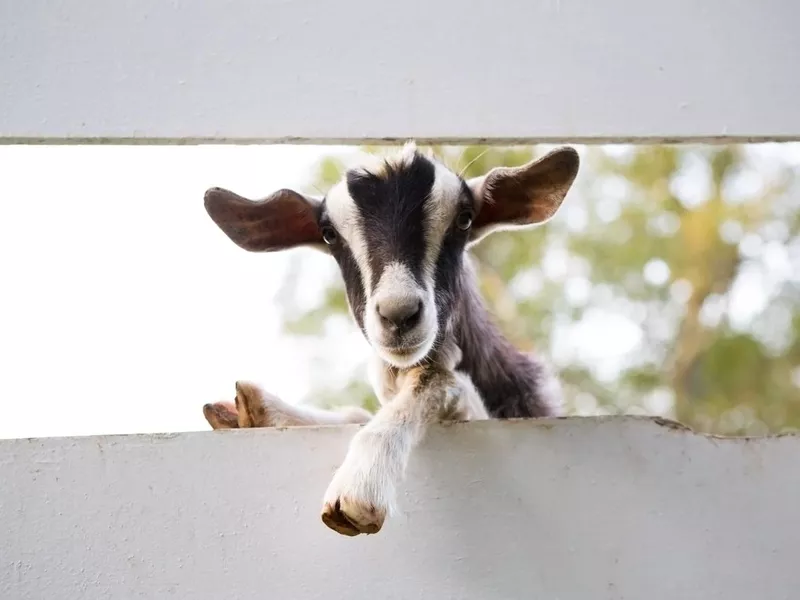
Getty Images
Despite this tic, many people around the world keep these goats as pets or breed them for milk and meat. Their fainting instinct is actually an asset: It prevents them from jumping fences and escaping when frightened.
You can see them in action (or rather, inaction) at Old Faithful Geyser Animal Farm in Northern California.
Flightless Cormorant
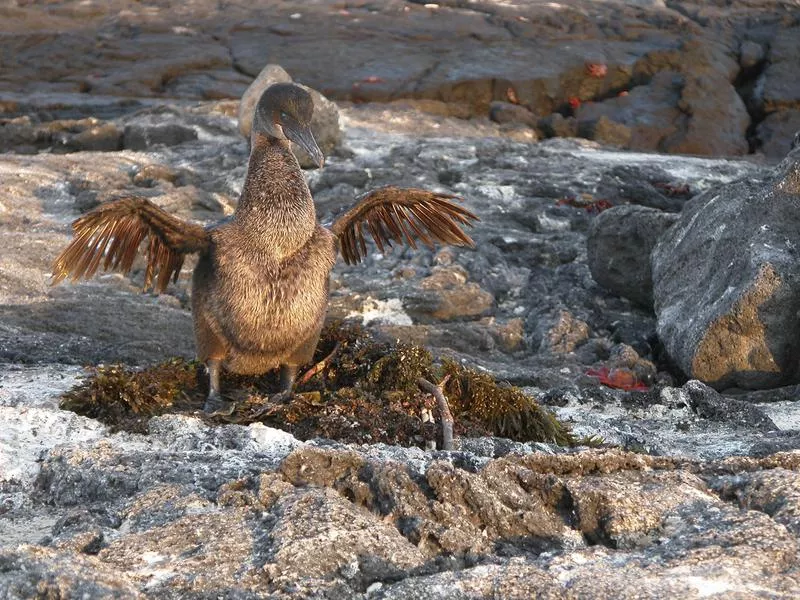
Getty Images
There are 29 species of cormorant in the world, and 28 of them can be found gliding over water before eventually touching down to fish.
But one, straightforwardly called the flightless cormorant, can never take to the sky, due to wings that are one-third the size of what’s needed to fly. Scientists posit that the bird doesn’t have larger wings because it simply doesn’t need them; it has very few land predators.
Where to Spot a Cormorant
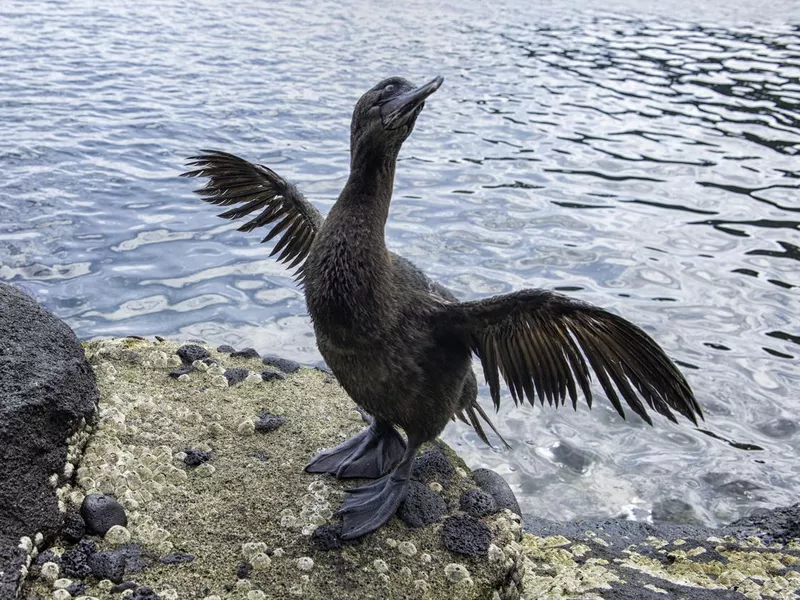
Getty Images
The flightless cormorant’s native home is the Galapagos Islands, where fish-rich waters provide ample food.
It often travels in groups near or on water, and you can easily spot it while touring the Galapagos.
Red-Lipped Batfish
Speaking of weird Galapagos animals, check out the red-lipped batfish.
The second part of the fish’s scientific name, Ogcocephalus darwini, is a nod to Charles Darwin, who famously studied evolution while visiting the Galapagos.
Where to Spot a Red-Lipped Batfish
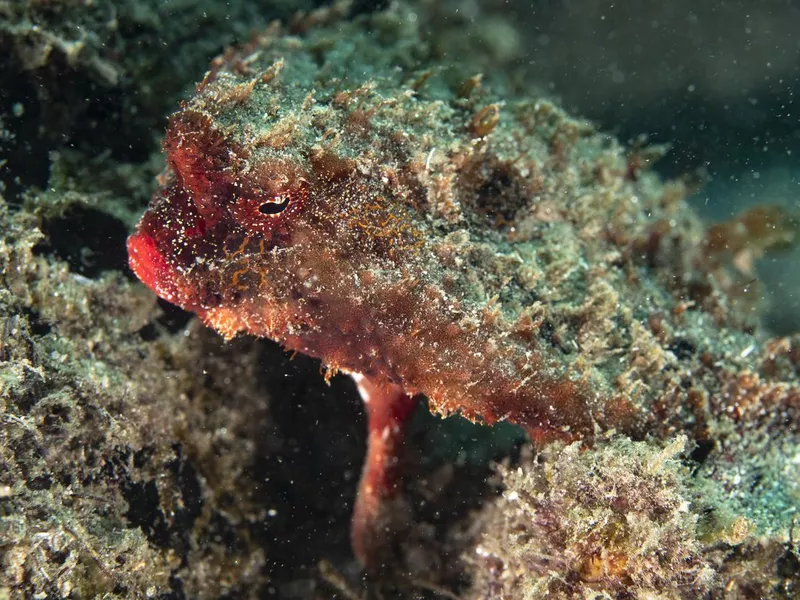
Getty Images
Native to the Galapagos, this fish dwells along the ocean floor and is known for its red lips, which makes it look like it’s recently devoured a bloody feast.
Mexican Mole Lizard
The Mexican mole lizard is easily mistaken for a large worm at first glance, but upon closer inspection, you will notice its elongated, ribbed body is attached to short legs with five fingers.
Its head also has eyes and a mouth, but you must look closely before the features become apparent.
Where to Spot a Mexican Mole Lizard
Want to track down one of these odd-looking, five-fingered lizards?
Head to Mexico’s beautiful Baja peninsula, where they are native.
Saiga Antelope
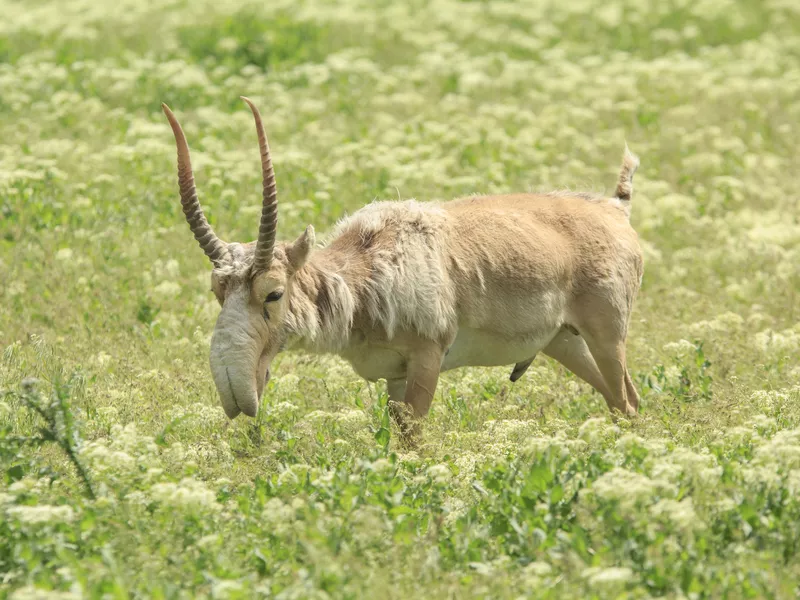
Getty Images
This beautiful antelope has an unusual snout with large, down-pointed nostrils, not unlike what’s found on an anteater. In addition to its extraordinary appearance, it is distinguished by a remarkable, and tragic, backstory.
In 2015, saiga antelope in central Kazakhstan began appearing weak and uncoordinated before dying en masse — in total, some 200,000 individuals were wiped out over the course of a few days. It required years of investigation to discover the death was caused by a mass bacterial infection in their snouts.
Where to Spot a Saiga Antelope
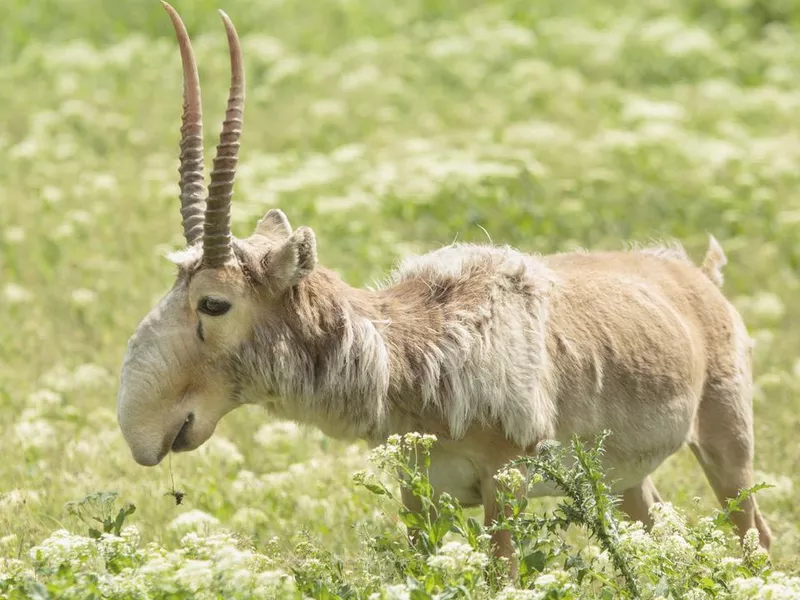
Getty Images
Between the massive death, habitat loss and overhunting, the saiga antelope faces a long road to recovery.
But you can still find sizable, migratory populations in Russia, Kazakhstan and Western Mongolia.
Long-Wattled Umbrella Bird
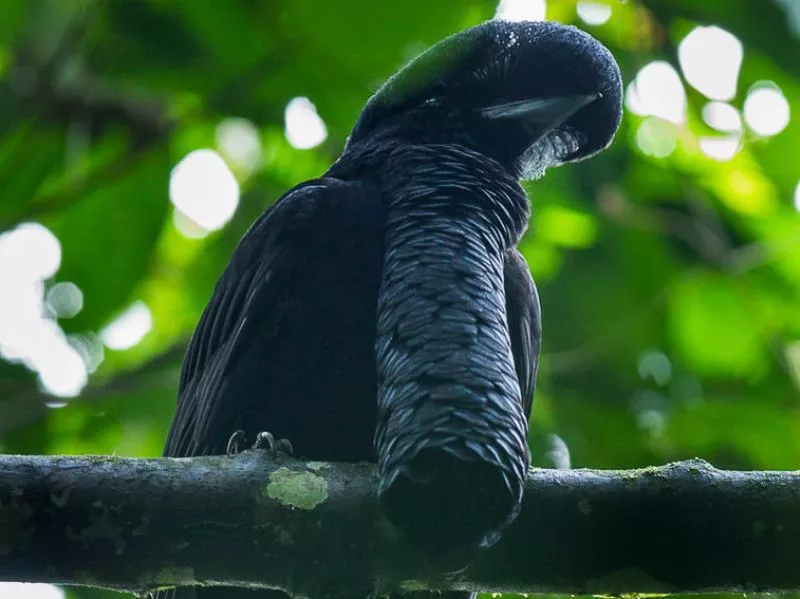
As is often the case with birds, female long-wattled umbrella birds don’t look like anything special. But the males are incredible, with long wattles — flabby hunks of skin, also seen on turkeys — extending from their necks. More amazing still, they can control their wattles, retracting or extending them as desired during flight or while sitting stationary.
The wattles are especially odd considering they have no official purpose outside of potential courtship displays.
Where to Spot a Long-Wattled Umbrella Bird

Getty Images
The birds have protected habitat areas where numbers are strong, but deforestation in unprotected areas serves as a threat to their habitat and population density.
Spot them in parts of Ecuador and throughout southwest Colombia, where they are heavily concentrated.
Sloth
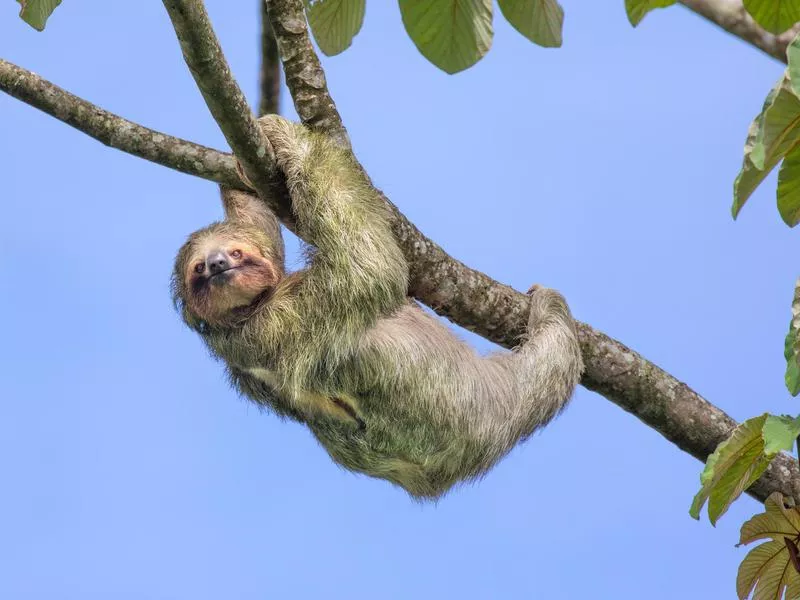
Getty Images
With their sad-looking eyes, often-smiling mouth, tiny ears, stubby tail and ability to turn their head 360 degrees, sloths are among the most distinctive-looking creatures in the animal kingdom.
Famously lethargic, they can often be found in the treetops, where they lounge, nap and graze. They move very little, and when they do, it’s a very slow process. In fact, the sloth only defecates around one time per week!
But lest you think the animal is simply lazy, this inertia is actually a well-honed defense mechanism. Sloths are so good at blending into the environment that predators often zoom past without noticing their presence.
Where to Spot a Sloth
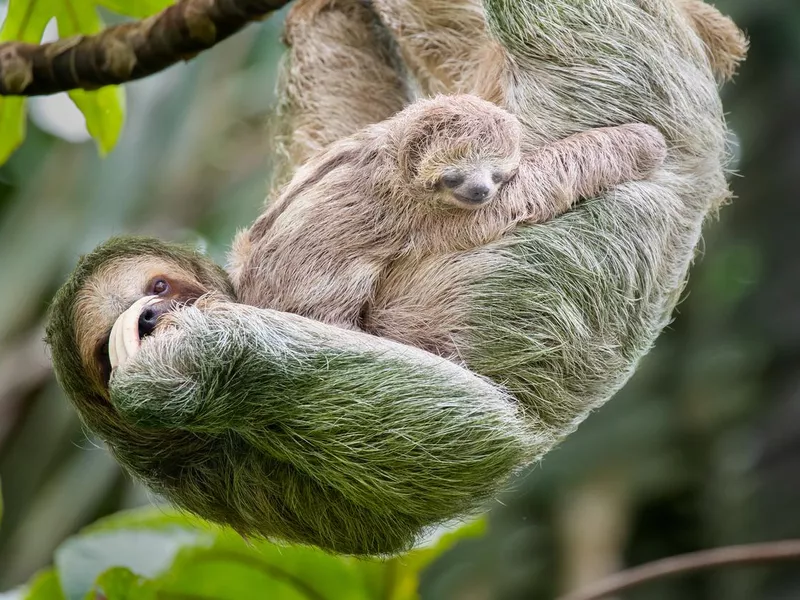
Getty Images
The animals, which can be either two-toed or three-toed, are found in Central and South America.
Nicaragua and Costa Rica offer particularly excellent viewing opportunities.
Pacu
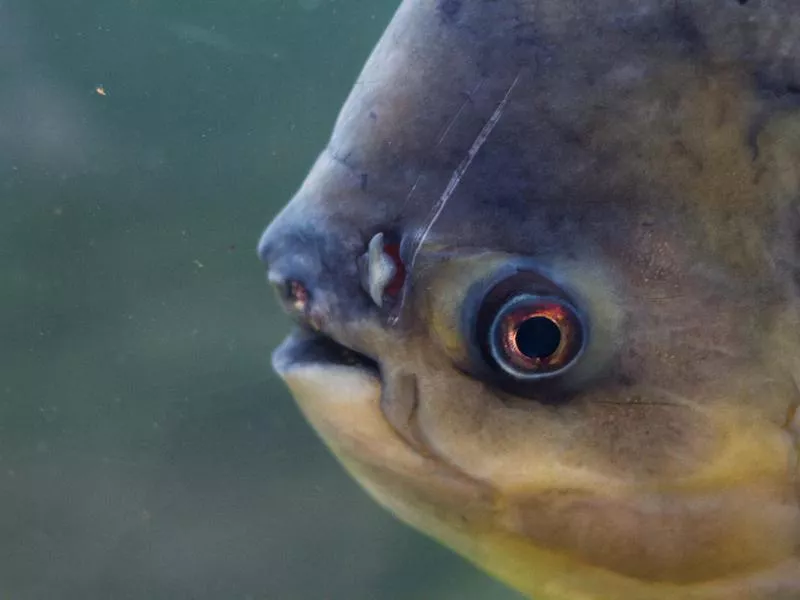
Getty Images
A cousin of the famous piranha, the pacu also sports a serious set of teeth. Rather than razor-sharp, however, these cuspids are squared. In fact, a pacu’s dentition closely resembles a perfect set of human teeth. Creepy, right?
But don’t be alarmed. Unlike piranhas, which can strip animals to their bones, pacus are herbivorous, using their strong teeth to nosh on fruit and seeds.
Where to Spot a Pacu
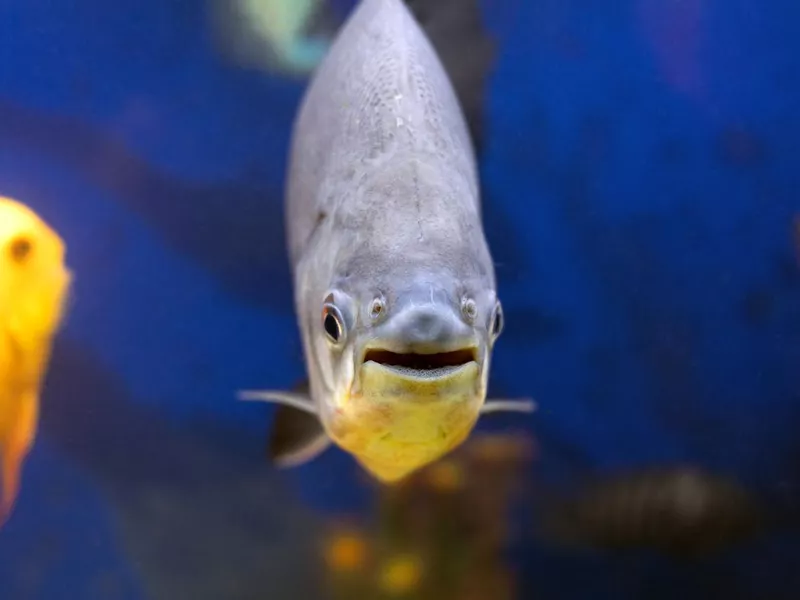
Getty Images
Several varieties of pacu are common in South America, with heavy concentrations in the vast Parana River system.
Hummingbird Hawk-Moth
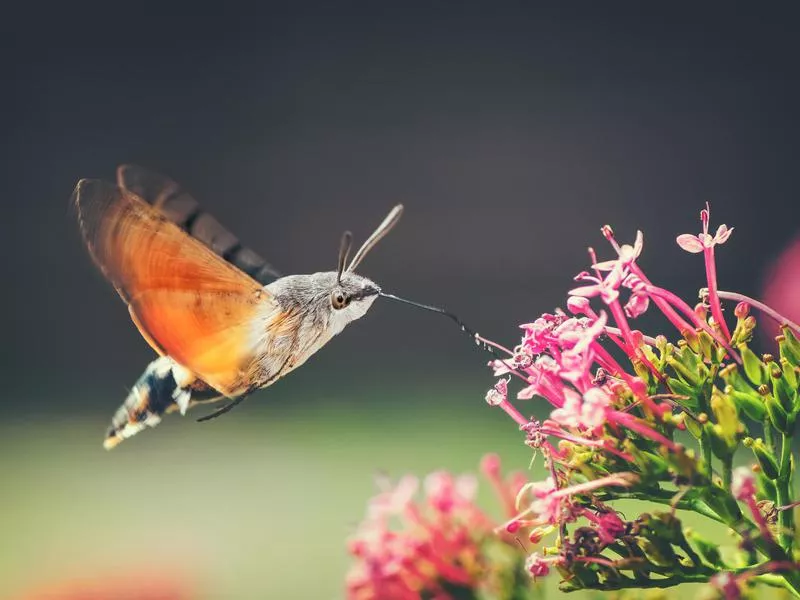
Getty Images
First described by the naturalist Carl Linnaeus, this is not your everyday moth.
Not quite as cute as the poodle moth described later on this list, it is instead distinguished by its exceptional size — it’s as large as a hummingbird! — and prominent reddish wings.
Where to Spot a Hummingbird Hawk-Moth
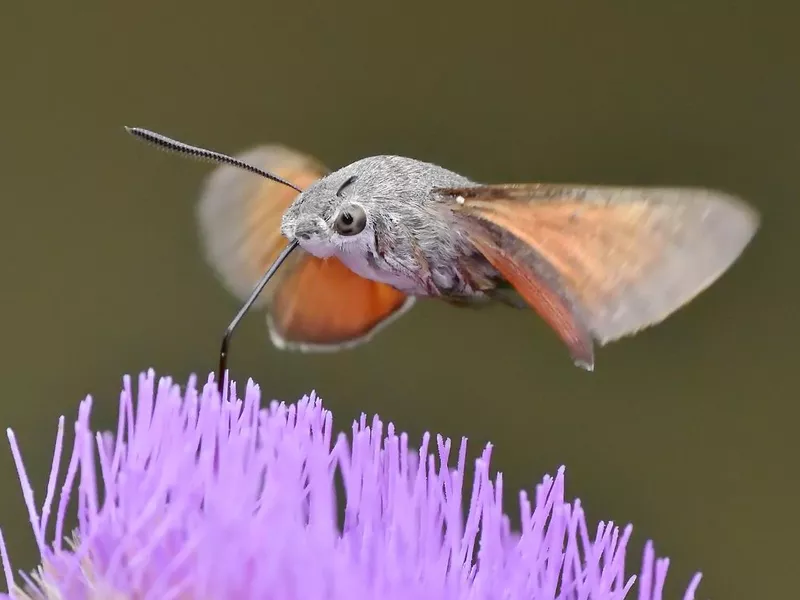
Getty Images
You can see the hummingbird hawk-moth in Scotland, Wales, Ireland and England, where it’s often found feeding in gardens and woodlands.
Fossa
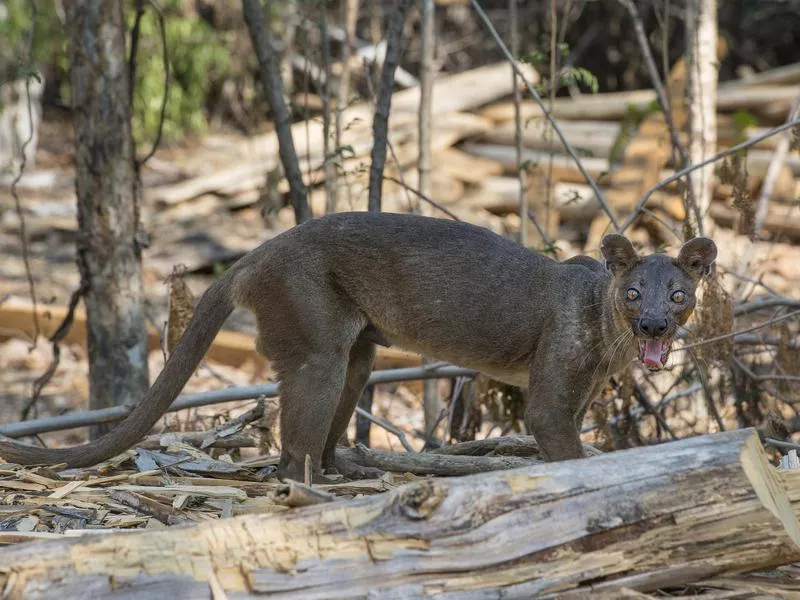
Getty Images
The fossa looks so much like a cat that naturalists and official descriptions refer to it as “cat-like” — even though it’s actually a member of the weasel family and is a close relative of the mongoose.
While this remarkable creature does have the ears and head shape of a cat, it boasts one totally unique feature: a long tail that it uses to grip tree branches as it climbs in search of food.
Where to Spot a Fossa
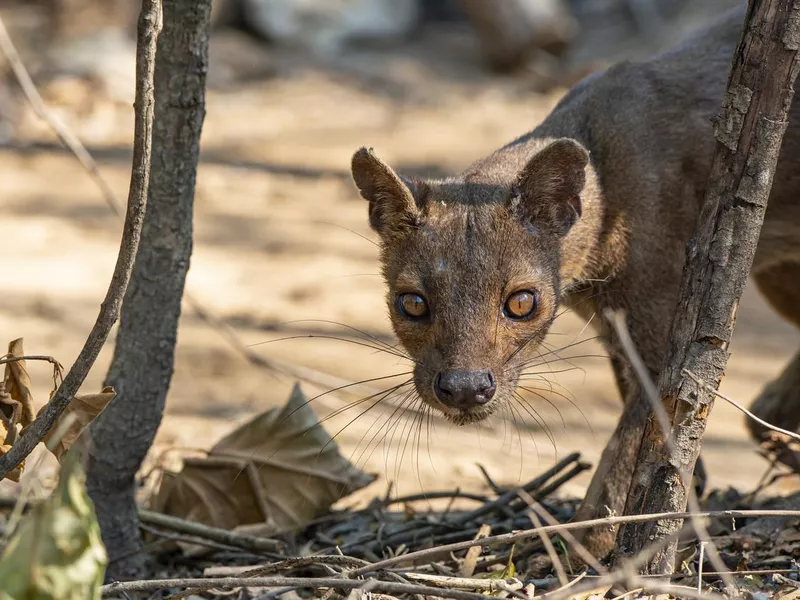
Getty Images
Like many odd and unusual animals, the fossa calls Madagascar home.
As the largest predator on the island nation, it feasts on everything from rodents to lemurs. Its range is also exceptional, covering everything from the lowlands to the plateaus.
Venezuelan Poodle Moth
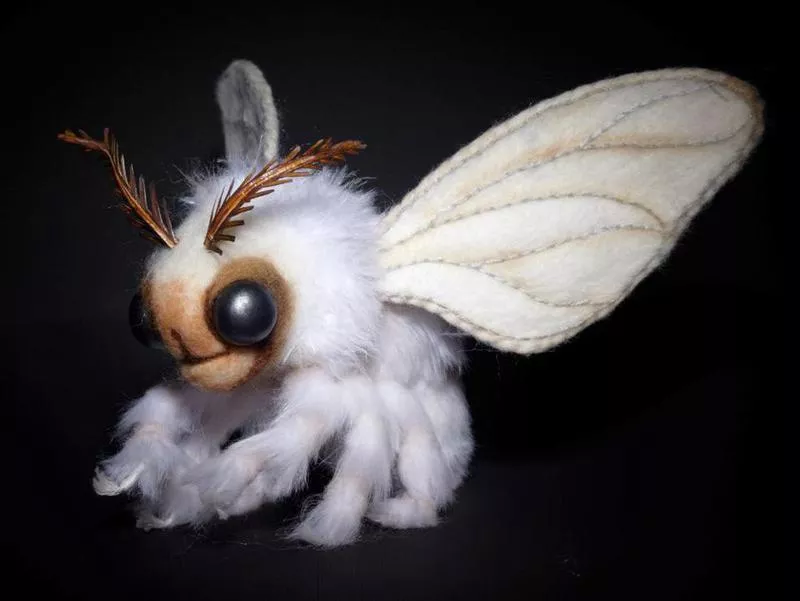
Getty Images
This large moth is covered with hair that makes it resemble a poodle. Unlike a poodle, however, it has wings and is attracted to your porch light, just like any other moth.
The general consensus seems to be that this is the cutest moth ever, and we wholeheartedly agree.
Where to Spot a Venezuelan Poodle Moth
The moth’s origin story is right in its name.
But what people may not realize is that it was only recently discoverd in Venezuela just a few years ago in 2009.
Penis Snake

Getty Images
It’s hard not to laugh at how aptly named this snake is; its head really does look like human male anatomy.
But in another way, its name is misleading: It’s an amphibian, not a reptile like a snake.
Where to Spot a Penis Snake
Found in Brazil, the penis snake was discovered by Sir Graham Hales in rainforest ecosystems.
It can be most easily found at the mouth of the Amazon River, where it feeds on bugs and small fish.
Japanese Spider Crab
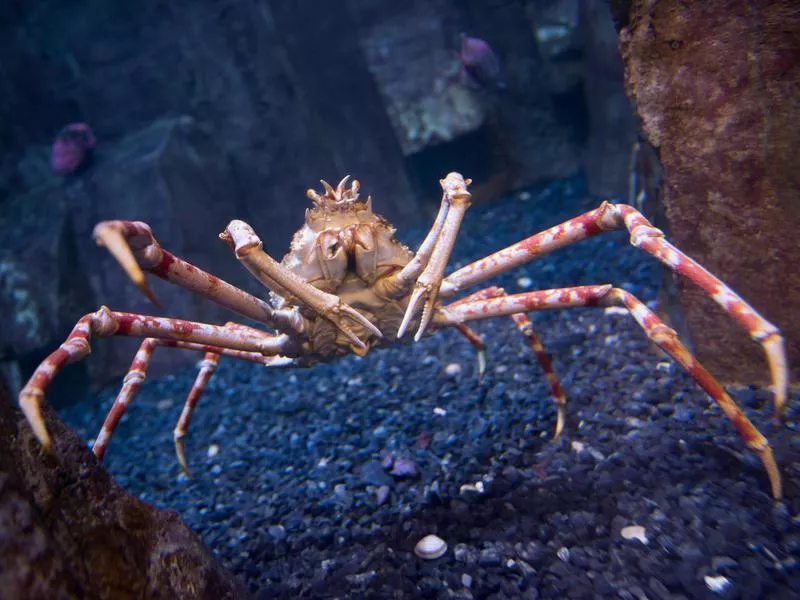
Getty Images
With their long, spider-like legs, spider crabs look like the villain in a comic-book series. They’re also exceptionally large and long-living.
They can top 40 pounds, with their legs reaching over 12 feet in length and can survive for 50 years or more … sometimes even for a century!
Where to Spot a Japanese Spider Crab
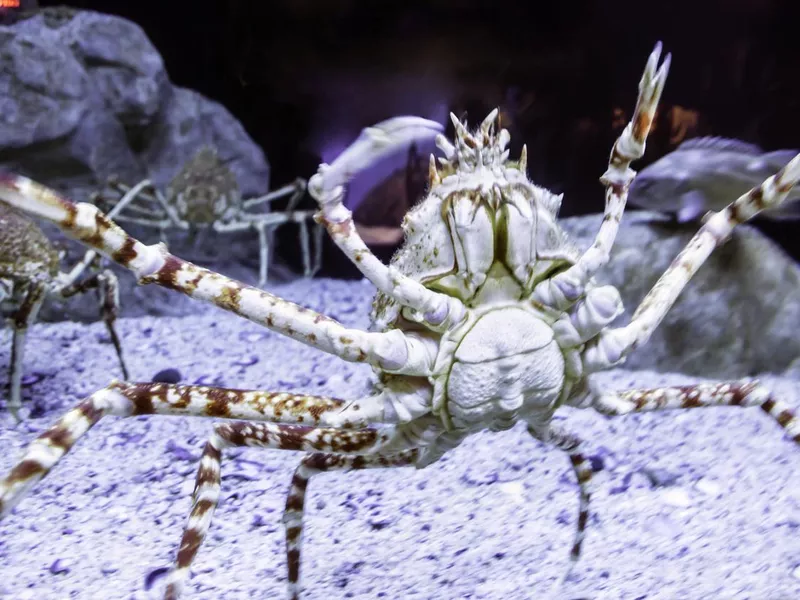
Getty Images
Although these crabs, found off the coast of Japan, are not dangerous hunters, they are carnivorous scavengers and will devour any dead fish or mammal that reaches their habitat on the ocean floor.
Lowland Streaked Tenrec

Getty Images
Tenrecs can fit in the palm of your hand and, with their orange and black coloring, resemble a bumblebee.
They have quills and cute little snouts built for foraging insects and plants.
Where to Spot a Lowland Streaked Tenrec
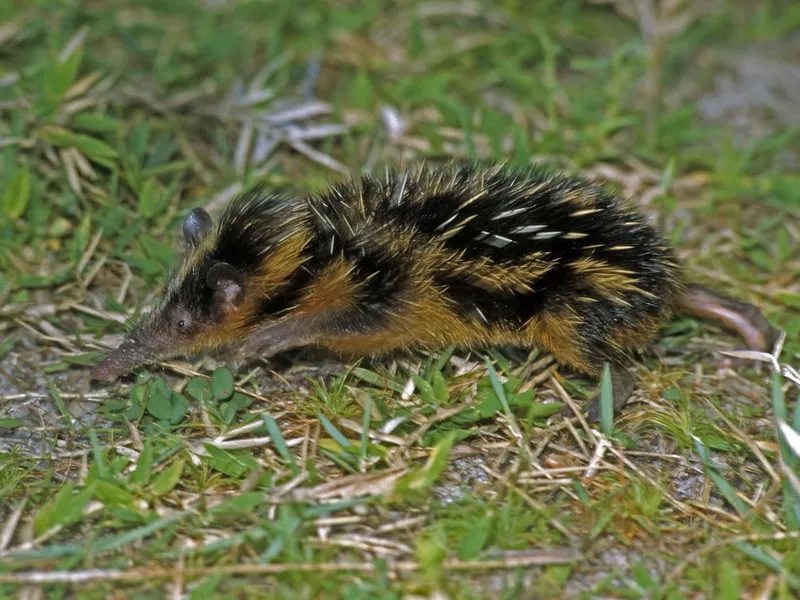
Getty Images
There are two distinct types of tenrecs, each of which is found in a different Madagascar climate zone. The lowland streaked tenrec occupies the eastern rainforests, while the highland version lives in the mountainous rainforests.
Unlike their highland counterpart, the lowland streaked tenrec is known to be active throughout the day and night and is a fairly social creature, often gathering in small groups.
Satanic Leaf Tailed Gecko
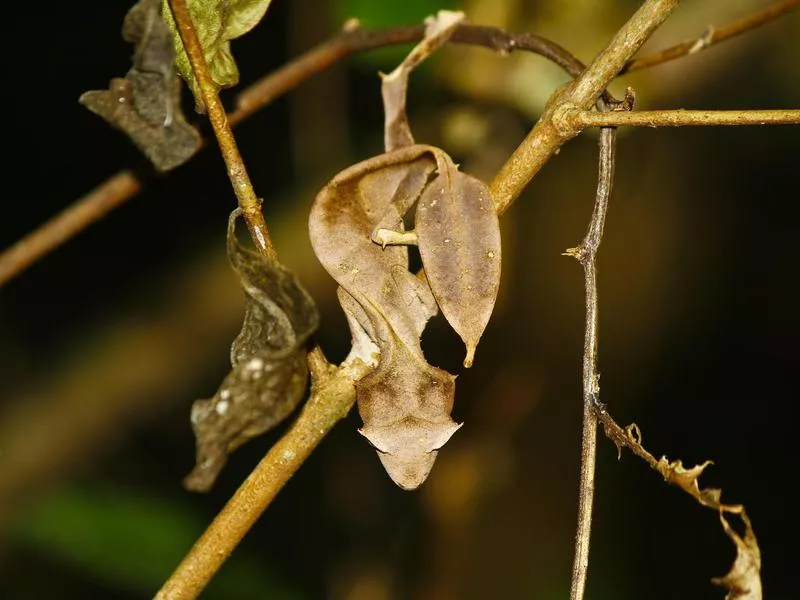
Getty Images
This lizard is not actually part devil, as images on the internet showing it with red eyes, surrounded by flames, would have you believe.
The leaf-tailed portion of the name is dead accurate, however. The animal’s body and tail mimic a dried-out, brownish leaf. The skin has even formed veins to replicate the veins on a leaf.
Where to Spot a Satanic Leaf Tailed Gecko
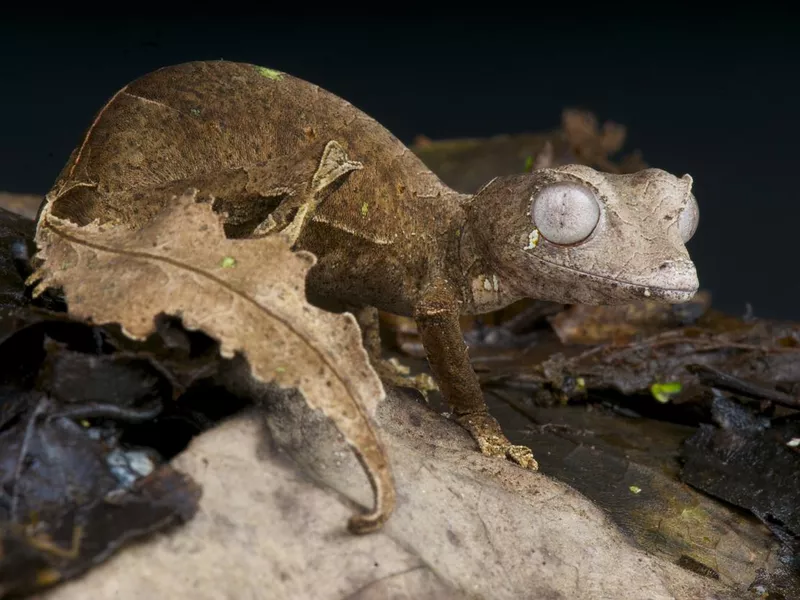
Getty Images
This is another unusual animal that calls Madagascar home, but good luck finding one.
In addition to its remarkable capacity for camouflage, this gecko can trick predators by voluntarily shedding its tail.
Marabou Stork

Getty Images
This large bird (it can stand up to 5-feet tall!) has some unfortunate nicknames: “nightmare bird” and “undertaker bird.” The names are cruel, but not totally inaccurate: With its long legs, massive beak and reddish neck pouch, it is pretty disturbing-looking.
Even freakier is its penchant for eating human garbage and wearing its own feces.
Where to Spot a Marabou Stork
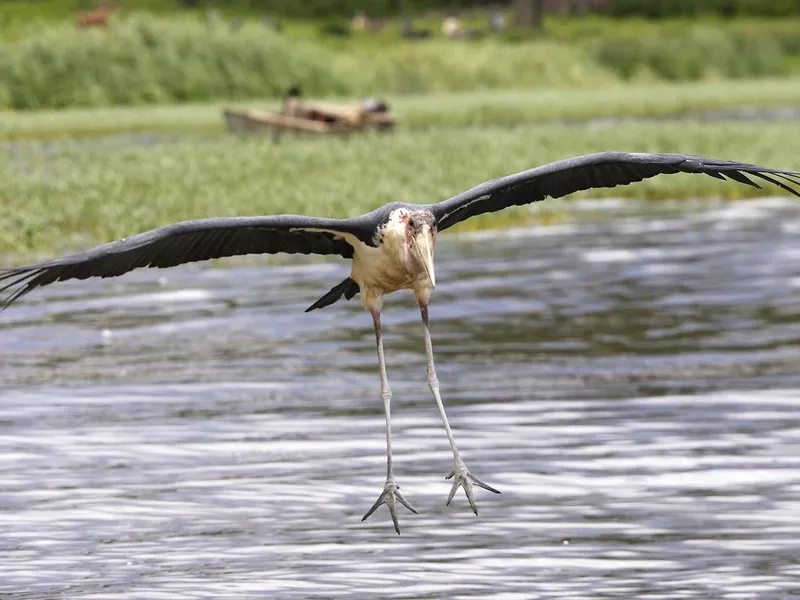
Getty Images
Despite their odd looks and habits, seeing these large birds in the wild is great for checking off the bucket list.
Marabou storks live in Africa south of the Sahara, including in South Africa’s Kruger National Park.
Sunda Colugo
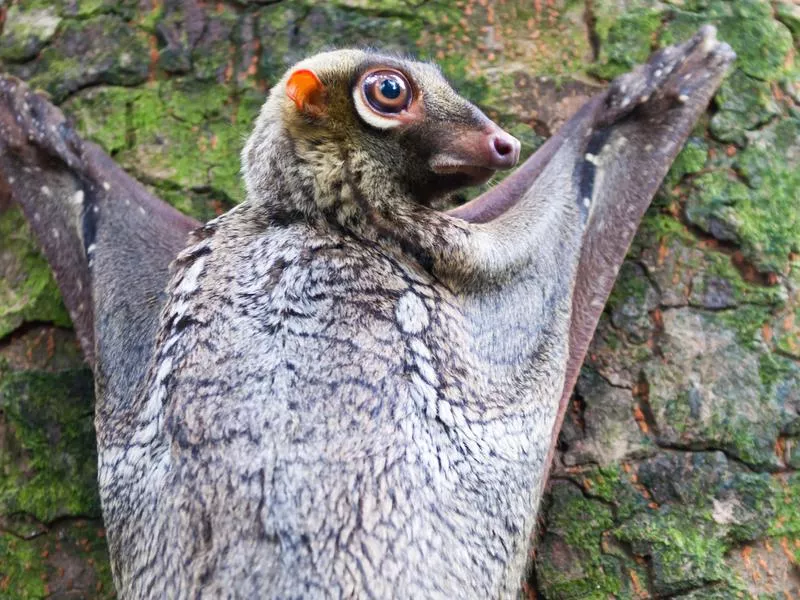
Getty Images
Also commonly called Sunda flying lemurs or Malayan flying lemurs, these lemurs technically don’t fly. They spread their wings and glide, much like the famous flying squirrels. Living in forests, they only need to travel short distances by air, and their gliding wings allow them to travel from tree to tree without touching the ground.
Their skill keeps them up high, away from predators, which is necessary as they are not well-adapted to life on the ground.
Where to Spot a Sunda Colugo
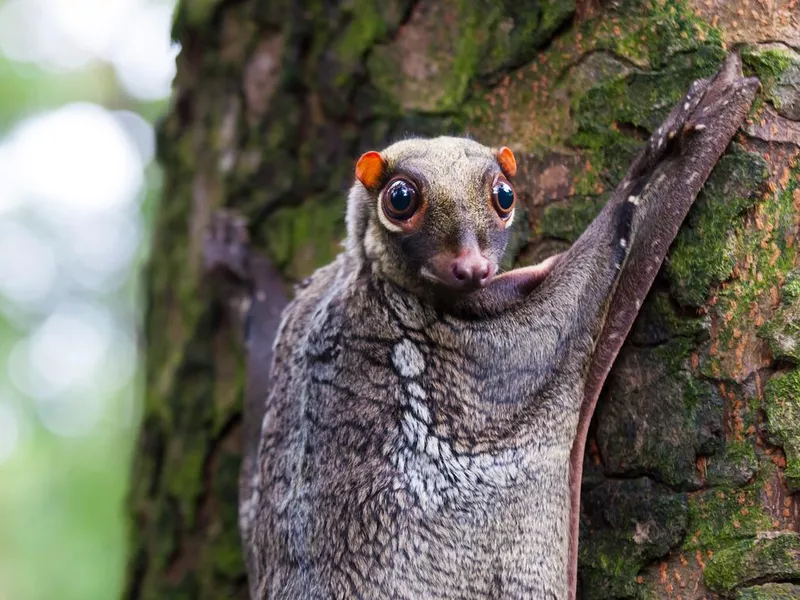
Getty Images
This distinctive lemur is found in Southeast Asia, and its habitat is expansive, with populations in Thailand, Singapore, Malaysia and Indonesia.
It’s only one of two known flying lemurs, with the other living in the Philippines.
Pink Fairy Armadillo

iucnredlist.org
When most think of an armadillo, they picture the kind found off the side of Texas roads. The pink fairy armadillo, though, is quite different, with a fuzzy white underbelly and a fashionably pink shell.
If you think its general appearance is cute, just wait until you learn about its size. This little armadillo is about the same size as a hamster, giving it perfect pet-like appeal.
Where to Spot a Pink Fairy Armadillo
You can find the pink fairy armadillo in Central Argentina.
Its range encompasses desert sand dunes and miles of scrub brush and grasslands.
Indian Purple Frog
Indian purple frogs look nothing like everyday frogs. Besides their unique and striking purple color, they are shaped like a lump and possess features that seem deformed when compared to a regular frog.
Thir irregular shape is partly attributed to their lifestyle: They spend the majority of their lives tucked underground, sucking down termites and other burrowing insects, only surfacing for a week or two during mating periods.
Where to Spot an Indian Purple Frog
As their name makes clear, these frogs are found in India, specifically in the Western Ghats mountain range.
They require forested habitat to support their underground lifestyle and, due to their limited exposure, they are tricky to spot.
Mata Mata

Getty Images
The mata mata makes other turtles look extremely active. (Which, of course, is saying something.) It sits idle and rarely leaves its shallow-water environment, only really moving when the time comes to lay eggs on land.
While in the water, these turtles sit idle and use their wide mouth to suck down unsuspecting prey. They essentially inhale their food, as their wide head and weak jaw make chewing all but impossible.
Where to Spot a Mata Mata
The mata mata’s bumpy turtle shell is used to hide its snake-like neck and head. It is found in the Amazon, though you must travel deep into the jungle to spot it.
Luckily, the freshwater turtle occupies shallow, freshwater streams; keep a keen eye, and you may be able to catch sight of its shell.
Panda Ant
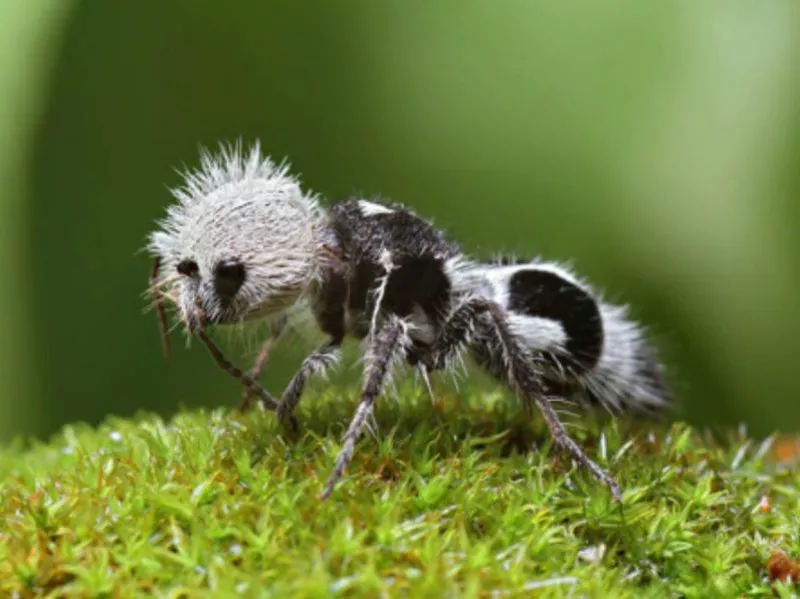
Getty Images
Just as panda bears are notoriously cute, so too are panda ants. Fuzzy, with white bodies and black spots, they look adorable and innocent. But don’t underestimate them, as they might actually be more dangerous than the bears.
In fact, the females are actually wingless wasps. This means they pack a serious punch with their sting.
Where to Spot a Panda Ant
Panda ants are found in Chile and Argentina.
If you spot one, consider yourself lucky, but whatever you do, don’t pick it up.
Honduran White Bat
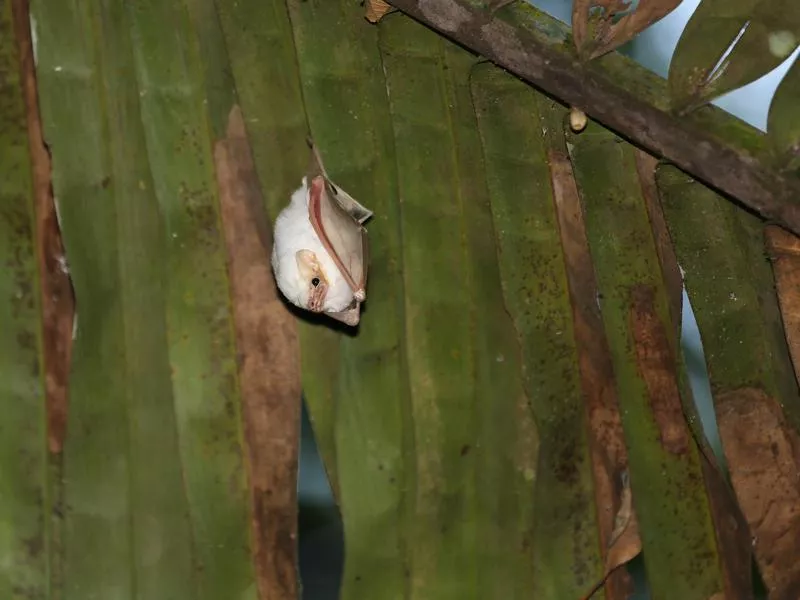
Getty Images
Luckily, these vampire-esque albino bats are vegetarians and have no interest in causing harm.
Their pointed ears are yellowish and almost translucent, with a shape like an elf, and their stark white color makes them easy to spot.
Where to Spot a Honduran White Bat
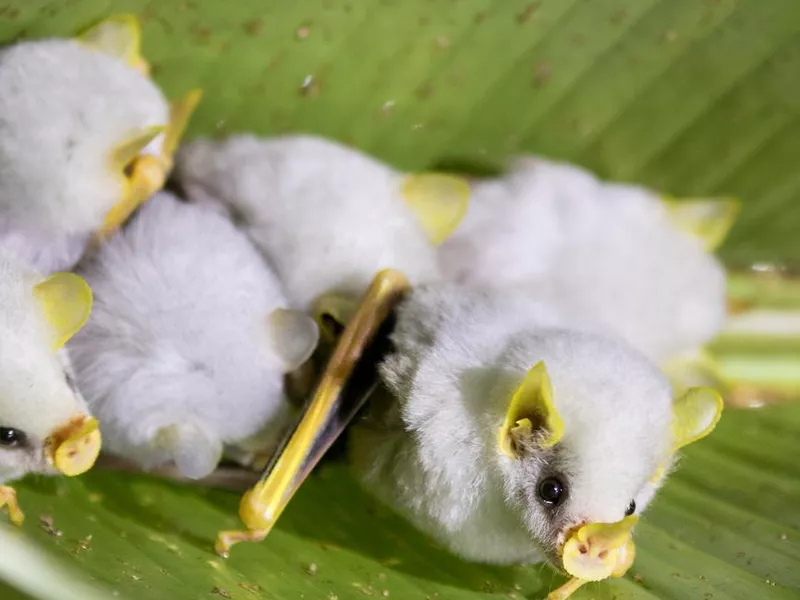
Getty Images
You can find them during the daytime hanging out in groups in tent-shaped leaves throughout eastern Honduras, Nicaragua, Costa Rica and Panama.
Kinkajou

Getty Images
Related to the raccoon, the kinkajou actually looks nothing like its cousin. It weighs a mere 3-7 pounds and is 1-2 feet long.
Its prehensile tail is used to grip trees, and it has an interesting diet: a mix of honey from beehives and whatever it can find from scavenging. (In the latter sense, it is very much like a raccoon.)
Where to Spot a Kinkajou
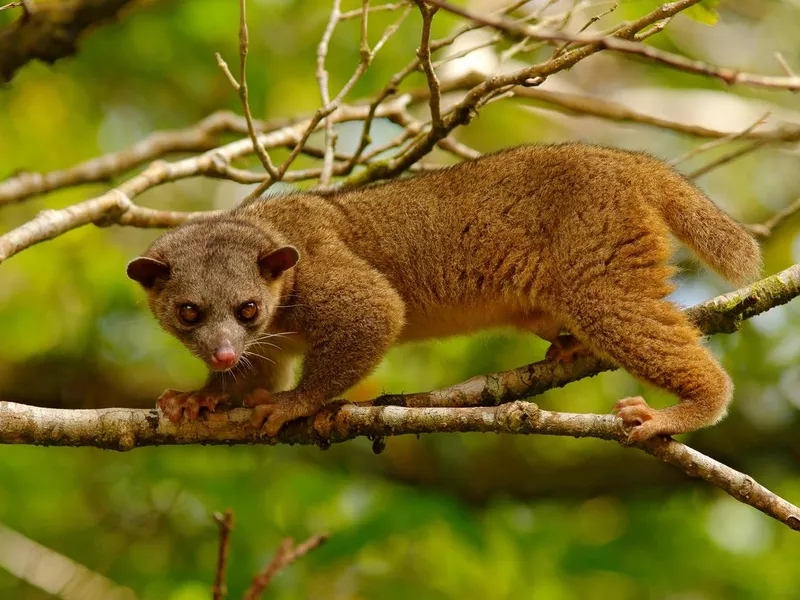
Getty Images
Nicknamed “honey bears,” kinkajous occupy a niche in the trees, living in Central and South American rainforests.
They hang out in groups and enjoy social grooming and communication. But they can be hard to find in their dense canopy home.
De Brazza’s Monkey
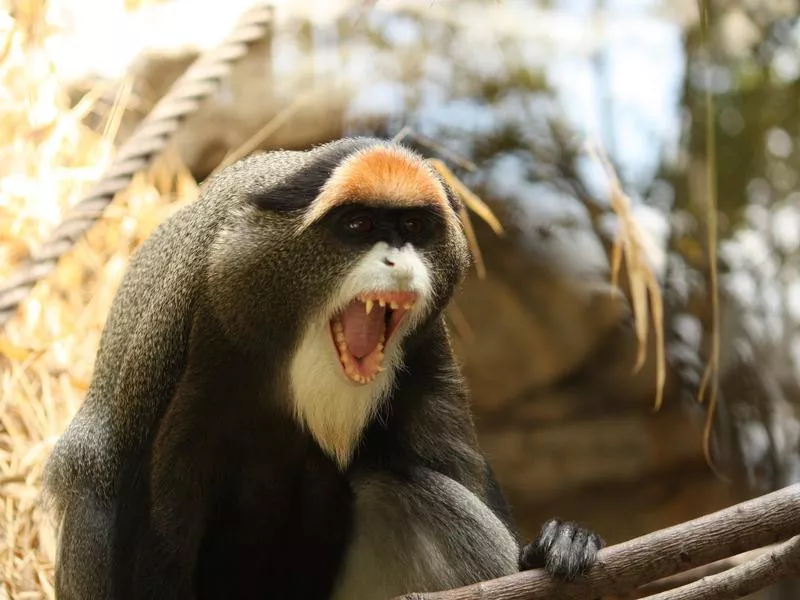
Getty Images
If a big white beard signifies wisdom, then De Brazza’s monkeys must be the wizards of the African plains.
With their dignified beards and bushy eyebrows, these primates have a majestic look.
Where to Spot a De Brazza’s Monkey
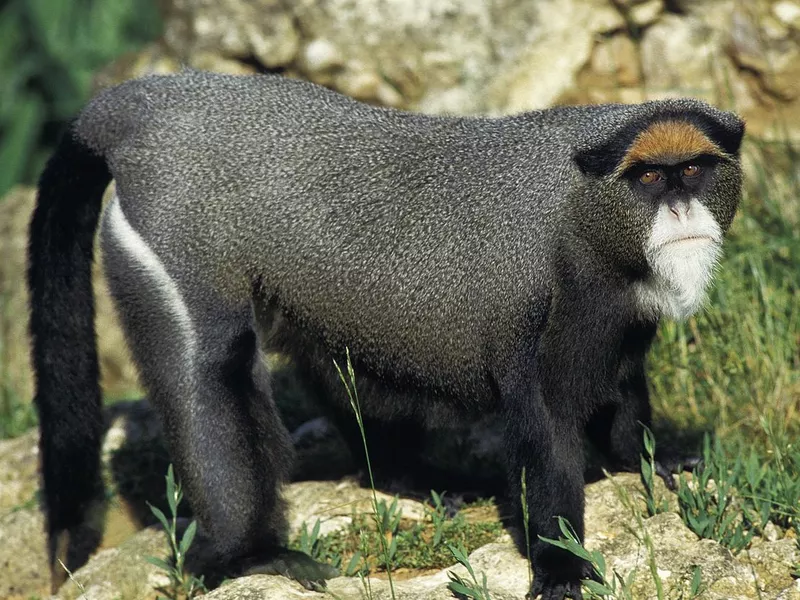
Getty Images
Low-key and quiet, they live in central Africa and spend most of their time along river systems surrounded by forests. You may be able to spot one from a boat as it forages on plants in the dense forest. Just make sure to keep quiet and limit your movement, as this monkey is easily spooked. When spotted, it will often freeze as a defense mechanism to avoid further detection.
Ethiopia, Kenya and Angola all contain populations.
Sea Pen
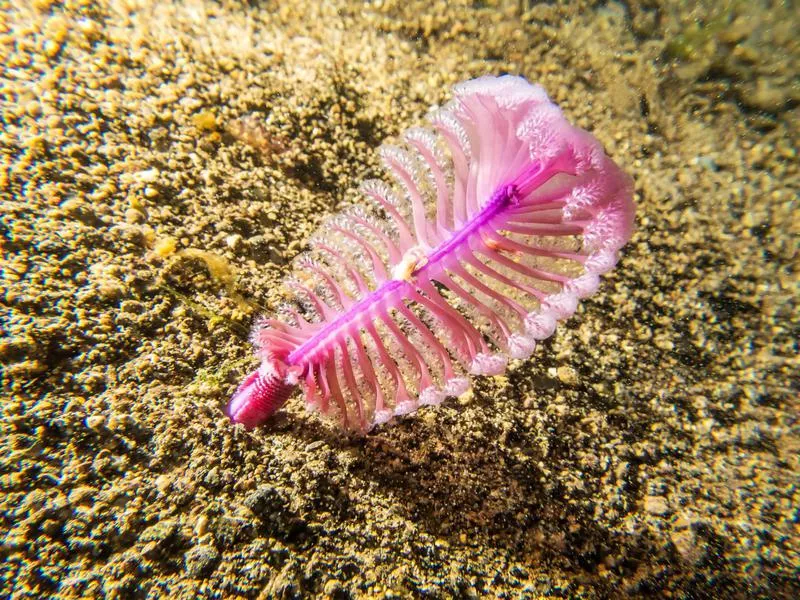
Getty Images
Invertebrates that anchor on the seafloor are not uncommon, but sea pens possess a few standout features. For one thing, they look like an old-fashioned quill pen. For another, they behave in a completely remarkable way.
Sea pens colonize in groups and, when stimulated, light up, displaying a bright green light on the seafloor. It looks like someone flipped on a light switch, especially when groups emit light in sequence.
Where to Spot a Sea Pen
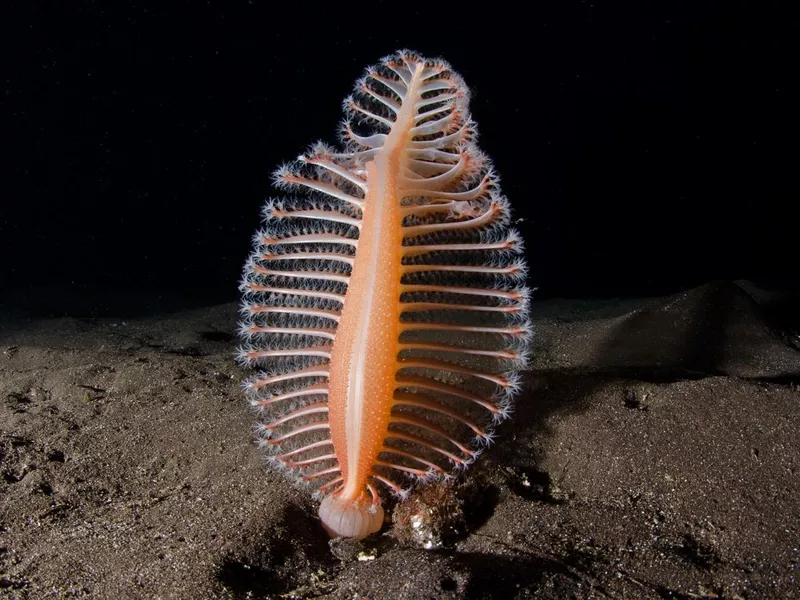
Getty Images
You can find these light displays in the Pacific Ocean, from the Gulf of Alaska to California. Sea pens live at depths of over 40 feet but often under 250 feet.
When diving, look for mud and sandy-bottom sections of the ocean floor to spot them.
Tarantula Hawk
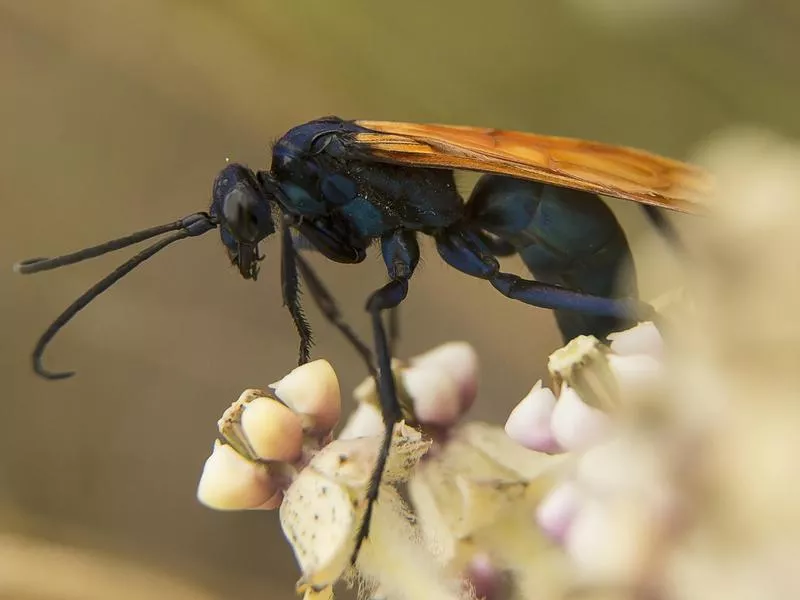
Getty Images
Most species avoid spiders, and for good reason: The predatory champions of the insect world sometimes have venom capable of taking down large mammals. The tarantula hawk, however, targets large tarantula spiders as a food source.
The female tarantula hawk is actually an exceptionally large wasp, carrying its own venom that paralyzes the tarantula. She then lays her eggs in the still-living spider and buries the carcass. When the eggs hatch, the baby tarantula hawks eat the living tarantula spider as they emerge and gain strength. It’s a truly terrifying experience from the perspective of the spider.
Where to Spot a Tarantula Hawk
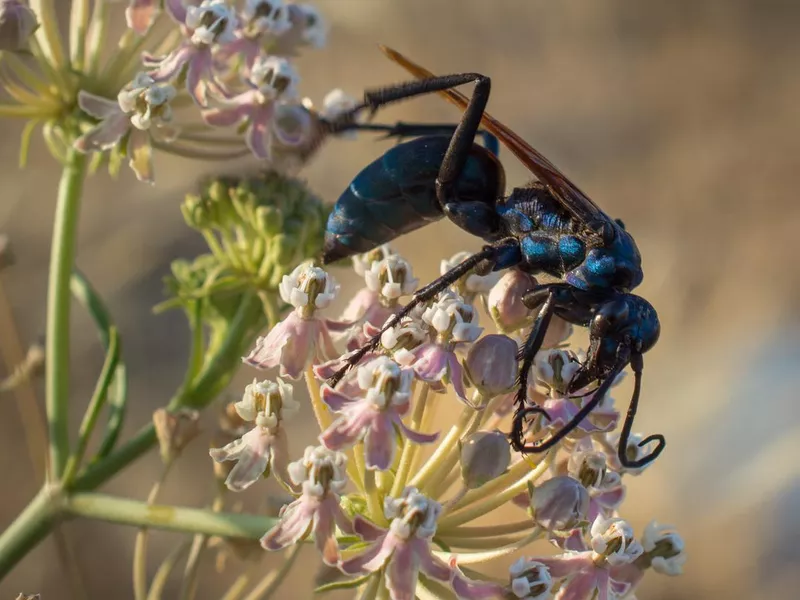
Getty Images
Tarantula hawks can be found throughout South America and the United States, where they make the desert their home.
Seeing one is undoubtedly cool, but make sure to keep your distance: They are known to sting humans.
Chinese Water Deer

Getty Images
Nicknamed the “vampire deer,” this adorable mammal possesses prominent tusks — actually elongated canine teeth — that it uses for eating and to assert dominance over rival males.
Where to Spot a Chinese Water Deer
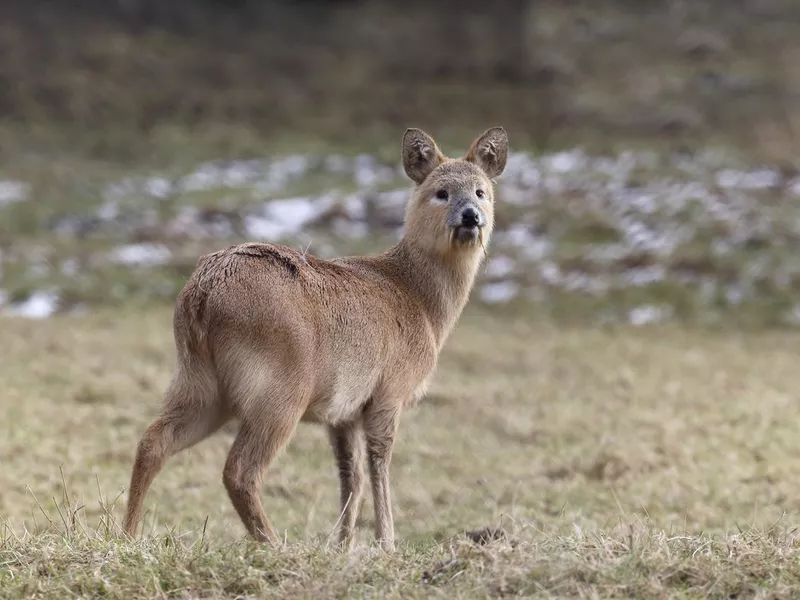
Getty Images
The solitary creatures are native to fertile river bottoms in Korea and the Yangtze River valley in China.
Australian Peacock Spider
A species in the jumping spider family, this one gets its “peacock” name because of its vibrant color patterns. And just like male peacocks, male Australian peacock spiders are the more vibrant of the sexes.
They use their red-, blue- and black-hued extensions to attract mates. Whether or not a female is interested in the mating dance they perform, she may attempt to attack, kill and feed on her wooer. Yikes!
Where to Spot an Australian Peacock Spider

Getty Images
As its name implies, this spider can be found in Australia — especially in the temperate or subtropical southwest or southeast of the continent.
Leafy Seadragon
A relative of the seahorse, the leafy seadragon is a bit more exotic-looking. At about 8 to 9 inches in length, leafies (as they’re often called) look like floating seaweed, providing them excellent camouflage in the deep sea. At the moment they hatch, these sea creatures are known for being completely independent, except for when they’re ready to breed.
Fun fact: Like seahorses, male leafy seadragons are the ones that care for the eggs.
Where to Spot a Leafy Seadragon
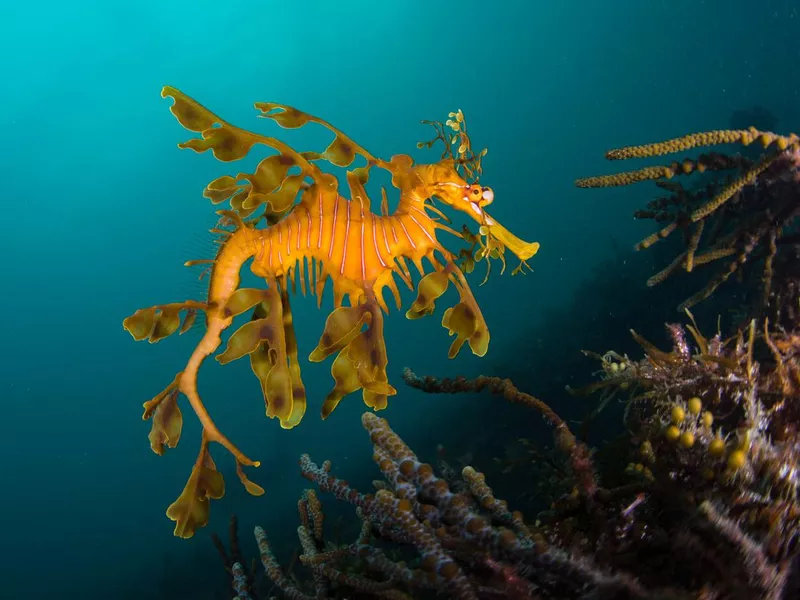
Getty Images
Another animal from down under, the leafy can be found along the southern and western coasts of Australia.
Jabiru
Similar looking to the marabou stork, the jabiru’s rather unusual neck is also what earns it a spot on this list.
In fact, the name, “jabiru,” means “swollen neck” in the Tupi-Guarani language.
Where to Spot a Jabiru
The jabiru is the tallest flying bird found throughout Central and South America.
There are also rare occasions when these storks make their way to Texas.
Narwhal
Oh, the mythical-looking narwhal! This is the closest creature (so far) that has similar features to the beloved unicorn. These creatures can live up to 50 years, with their main cause of death being suffocation — due to being trapped by sea ice. Like their other whale counterparts, they are quite large, ranging from 13 to 18 feet (excluding the tusk).
They do not have a dorsal fin, but their impressive tusk can be as large as 10 feet. Male narwhals are typically the ones to grow a tusk, which is actually a canine tooth that comes from the left side of the upper jaw through the lip. Some males (about one in 500) have two tusks, while only about 15 percent of females tout the unusual trait.
Where to Spot a Narwhal
Unfortunately, narwhals aren’t easy to find.
But if you are searching for one, they live in the Canadian Arctic, swimming throughout the Greenlandic and Russian waters.
Golden Tortoise Beetle
This ladybug-sized beetle looks like it must belong to the royal family.
It features a golden shell with black spots that’s shiny enough you can even see reflections from it.
Where to Spot a Golden Tortoise Beetle
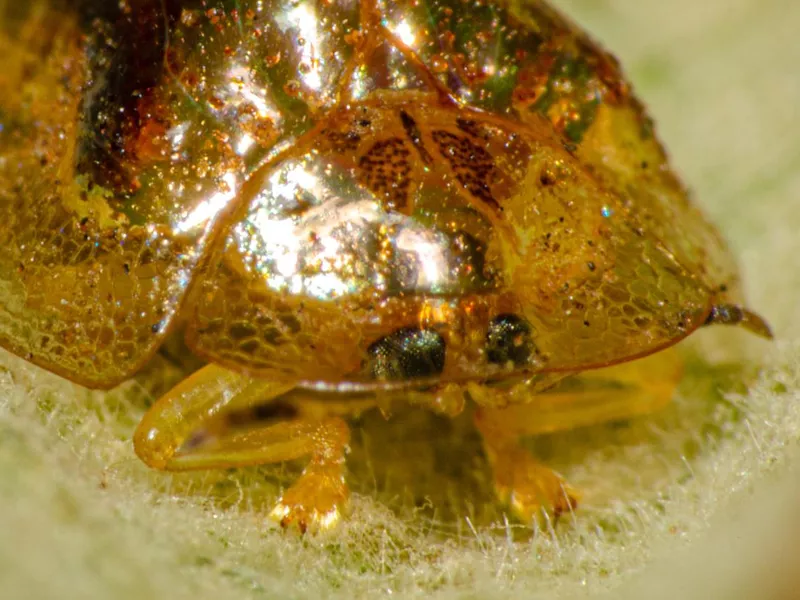
Getty Images
Also called the “goldbug,” this beetle can be found in the Americas and does change color throughout its lifetime.
Coatimundi

Getty Images
Is it a cat? A pig? Or a combination of both? Coatimundis (also known as hog-nosed coons) are similar to raccoons.
And you won’t want to knock their pig-like snouts. First off, they’re extremely flexible, with the ability to rotate up to 60 degrees in any direction. Plus, they use them to push objects and rub parts of their body.
Where to Spot a Coatimundi
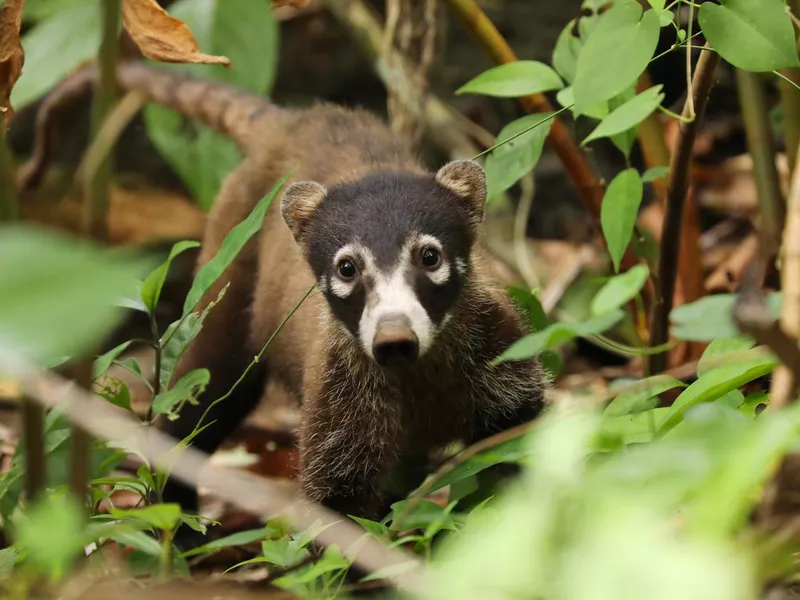
Getty Images
Native to the Americas, coatis are active day and night.
They are also known for being strong climbers and for being quite smart.
Lilac-Breasted Roller

Getty Images
At about 15 inches (including its tail), this rather small bird is an impressive hunter, preying on everything from snails to scorpions to lizards to snakes. They’re also quite aggressive birds that will carry their prey to a perch, where they will beat them until becoming dismembered.
Beauty, in this case, is quite deceiving.
Where to Spot a Lilac-Breasted Roller
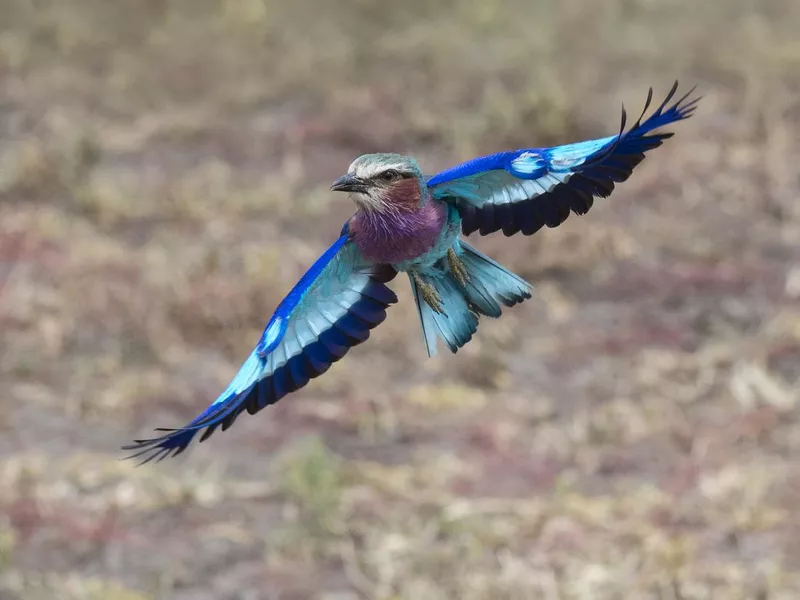
Getty Images
The lilac-breasted roller can be found in sub-Saharan Africa as well as the southern Arabian Peninsula.
Pangolin
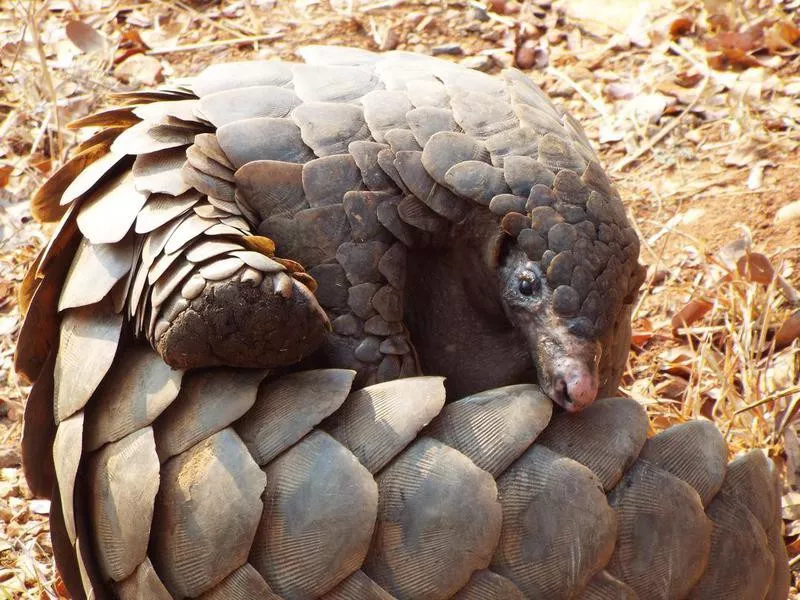
Getty Images
A pangolin can roll up into a ball, and its protective scales will keep predators at bay. It is the only known mammal to have this type of feature.
A nocturnal animal, the pangolin feeds on ants and termites.
Where to Spot a Pangolin
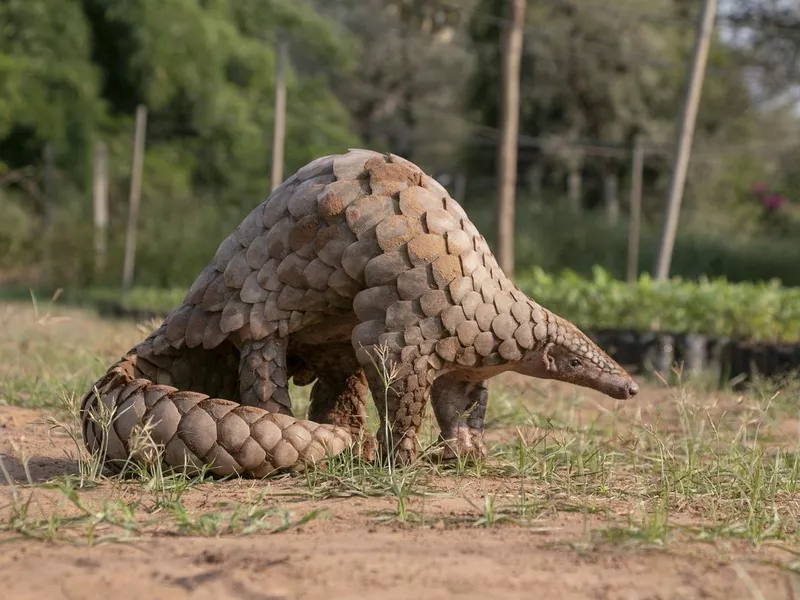
Getty Images
Unfortunately, they are currently threatened by poaching for both their meat and scales found in Chinese traditional medicine as well as by heavy deforestation of their natural habitats throughout Asia and parts of Africa.
Three of the eight species of pangolin are listed as critically endangered, three are listed as endangered and the last two are listed as vulnerable.
Echidna
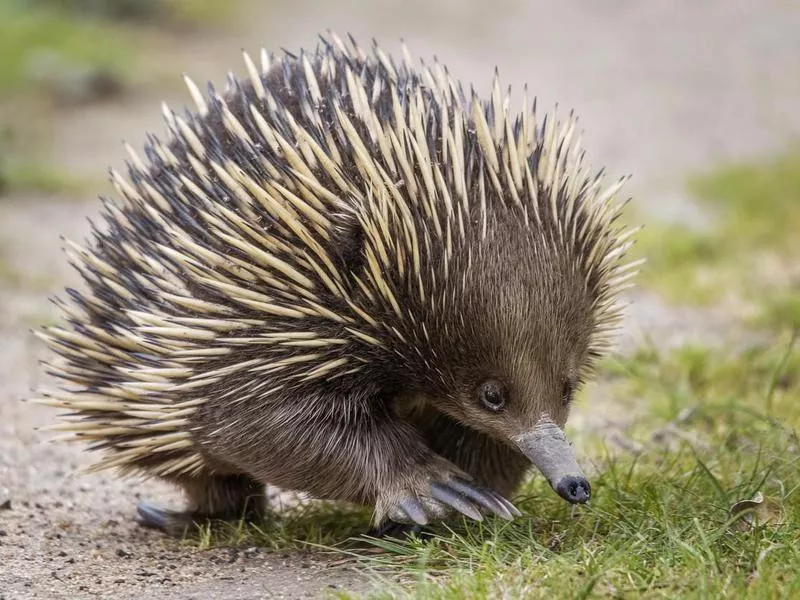
Getty Images
Evolved from a platypus-like creature between 20 and 50 million years ago, the echidna has aquatic ancestry, but it has adapted well to life on land.
While they look like hedgehogs or porcupines, their similarities to the platypus are quite remarkable. They have electroreceptors on their bills, which allow them to perceive natural electrical stimuli. They’re one of the few land creatures to have this ability.
Where to Spot an Echidna
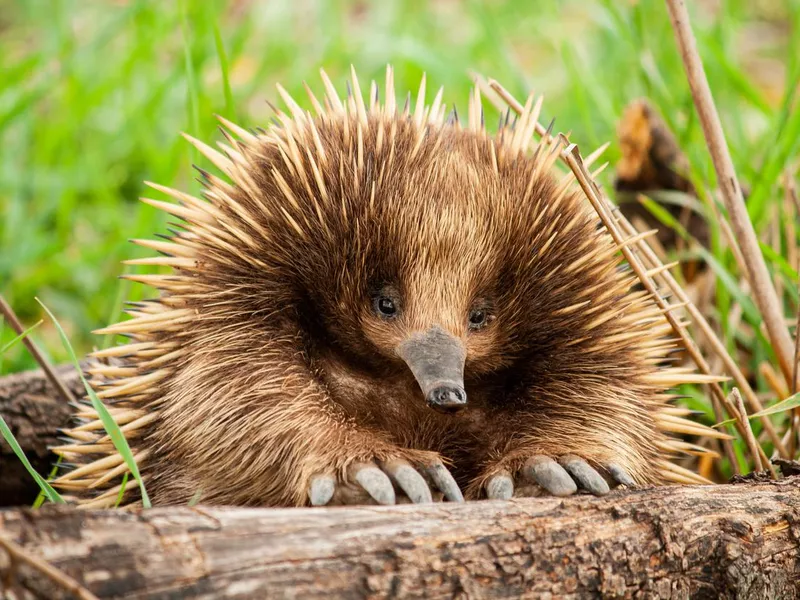
Getty Images
Another animal with a diet of ants and termites, the echidna lives in Australia and New Guinea.
Glaucus Atlanticus

Getty Images
The Glaucus Atlanticus, more commonly known as the blue angel, dragon slug, blue sea slug or several other similar nicknames, is a shell-less gastropod mollusk. They float upside down and are carried along by the winds and ocean currents — where do we sign up for that mode of transportation?
This sea slug is quite small at about an inch in length and is recognizable because of the dark blue stripes on its head.
Interesting fact: The blue sea slug can swallow the venomous Portuguese man o’ war by storing it in its finger-like extremities.
Where to Spot a Glaucus Atlanticus
These brightly hued sea slugs can be found throughout the Atlantic, Pacific and Indian oceans in both temperate and tropical waters.
Riverine Rabbit
These rabbits don’t look much different than your everyday cottontail, but they live in much harsher conditions.
The most unusual thing about them is their small litter size: They will often only produce a single offspring.
Where to Spot a Riverine Rabbit
The rabbits carve out a living in dry areas and burrow in dry river beds in the Karoo region of South Africa.
Unfortunately, their numbers are in a major decline due to habitat loss and their difficult environmental niche of limited reproduction.